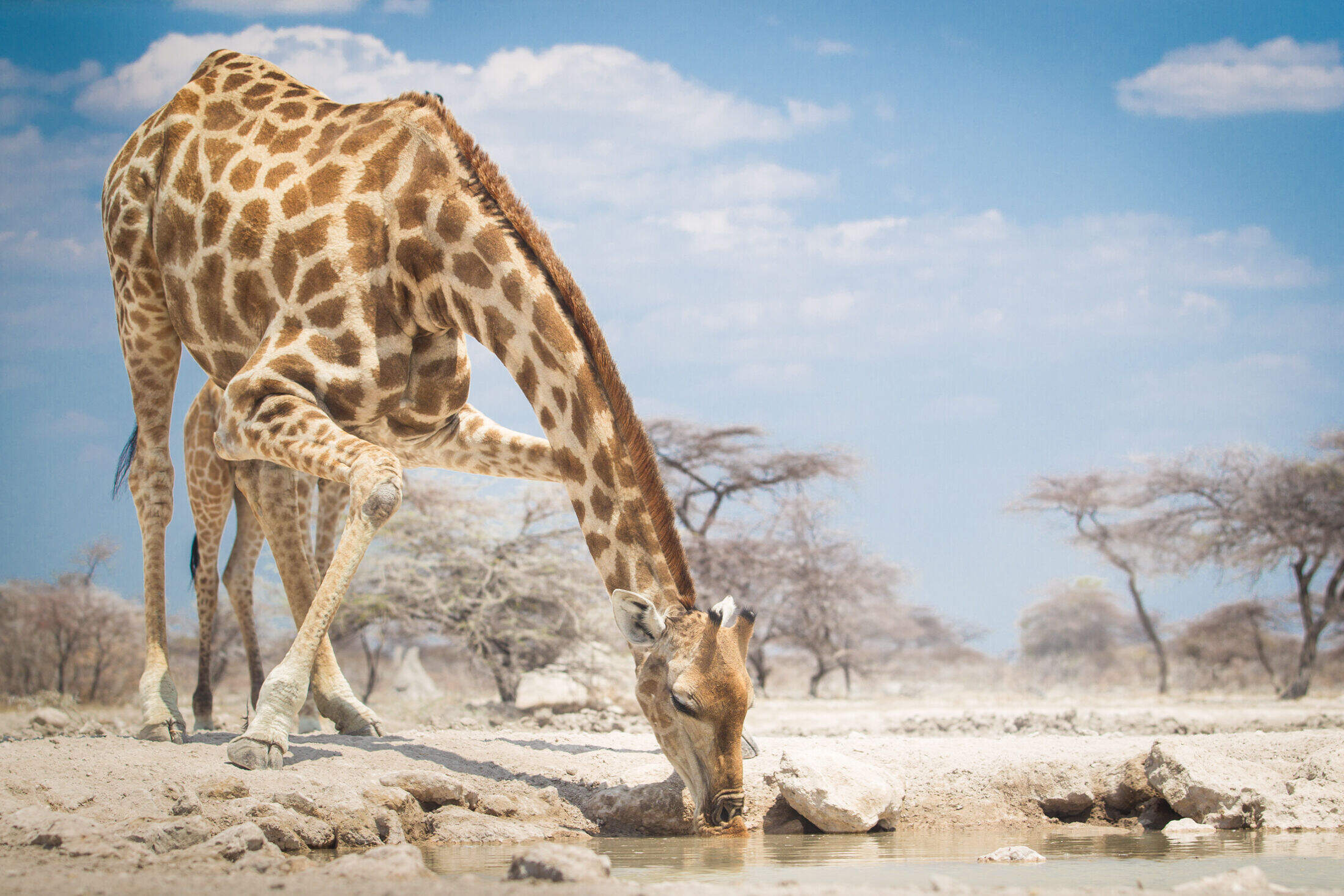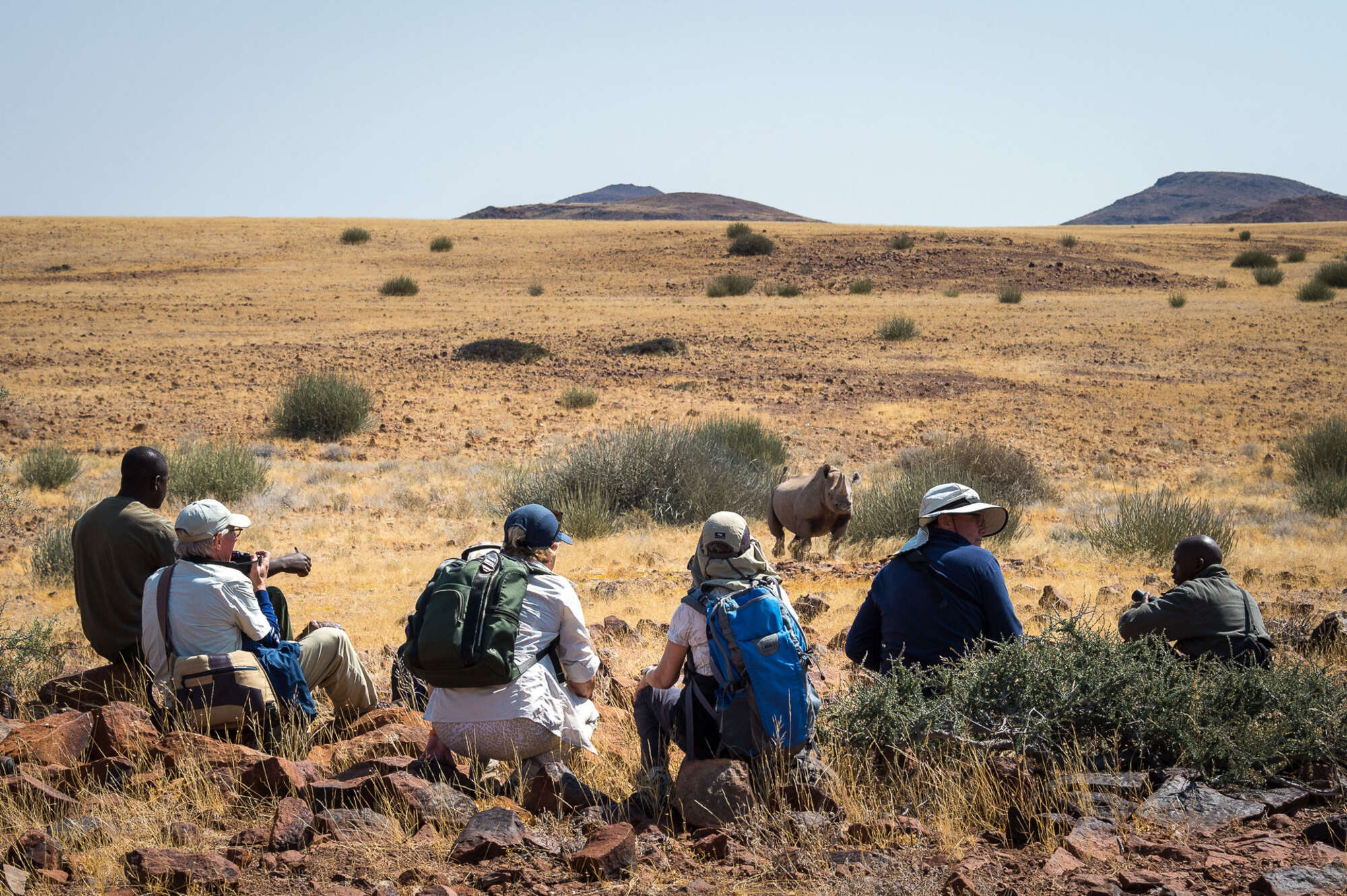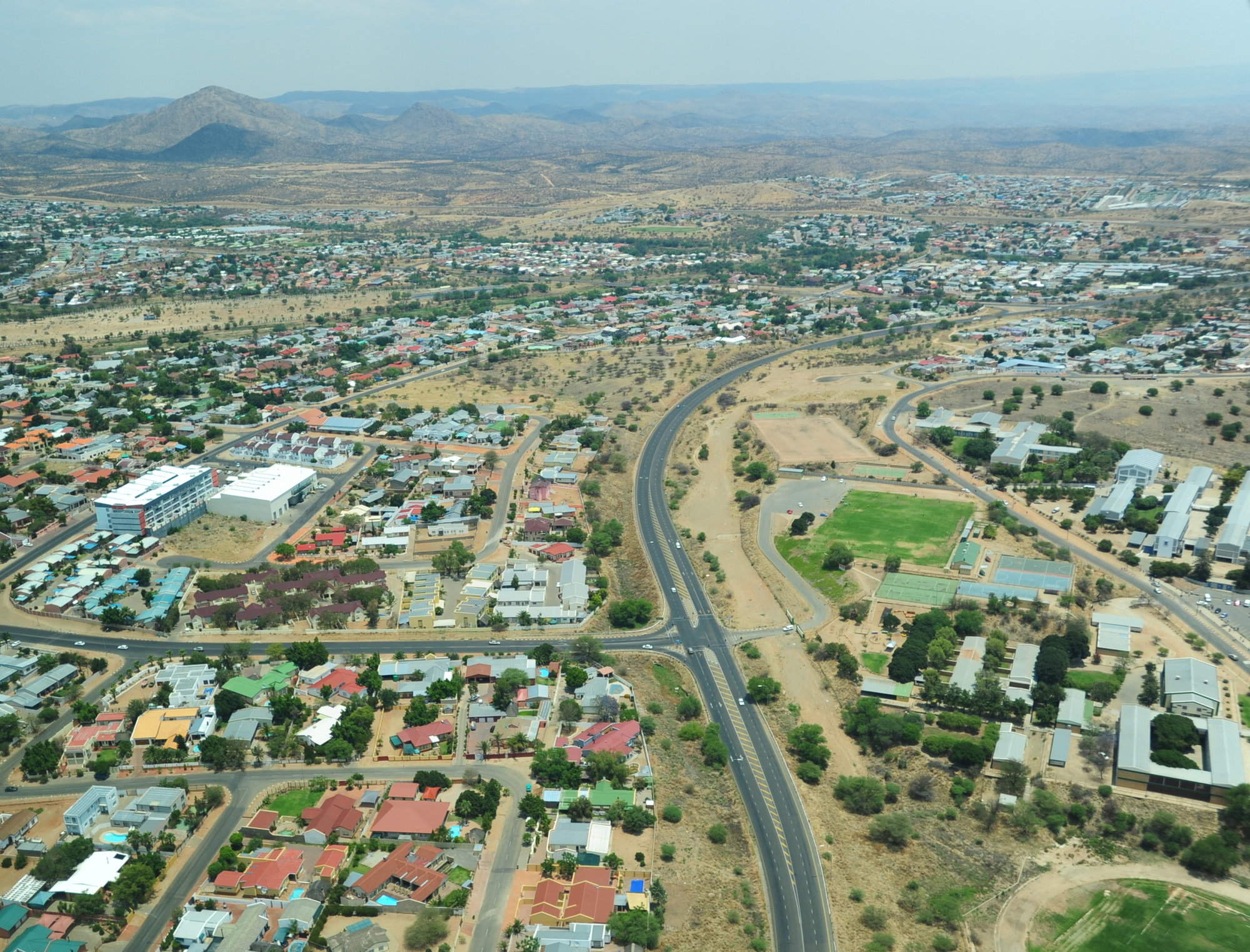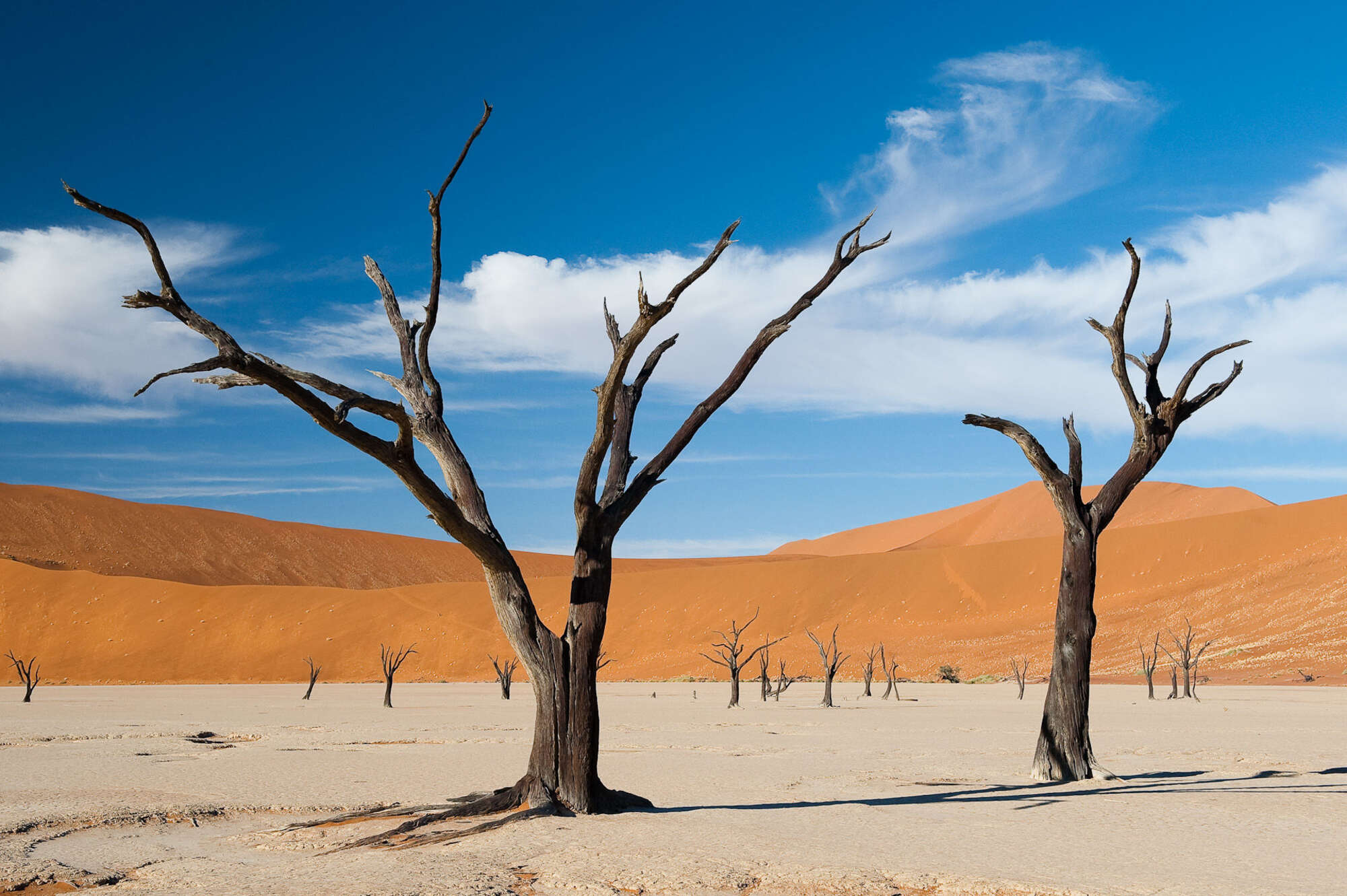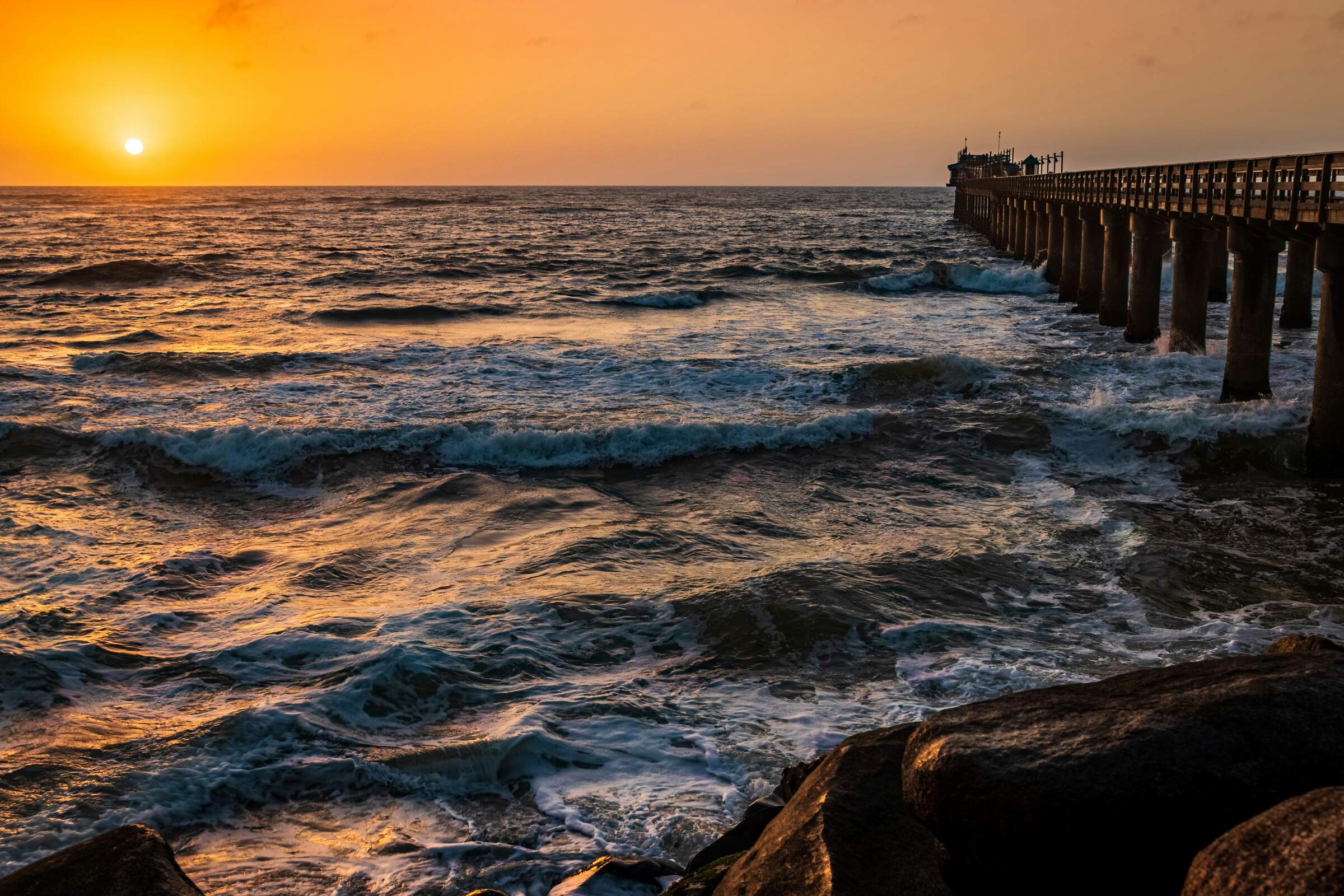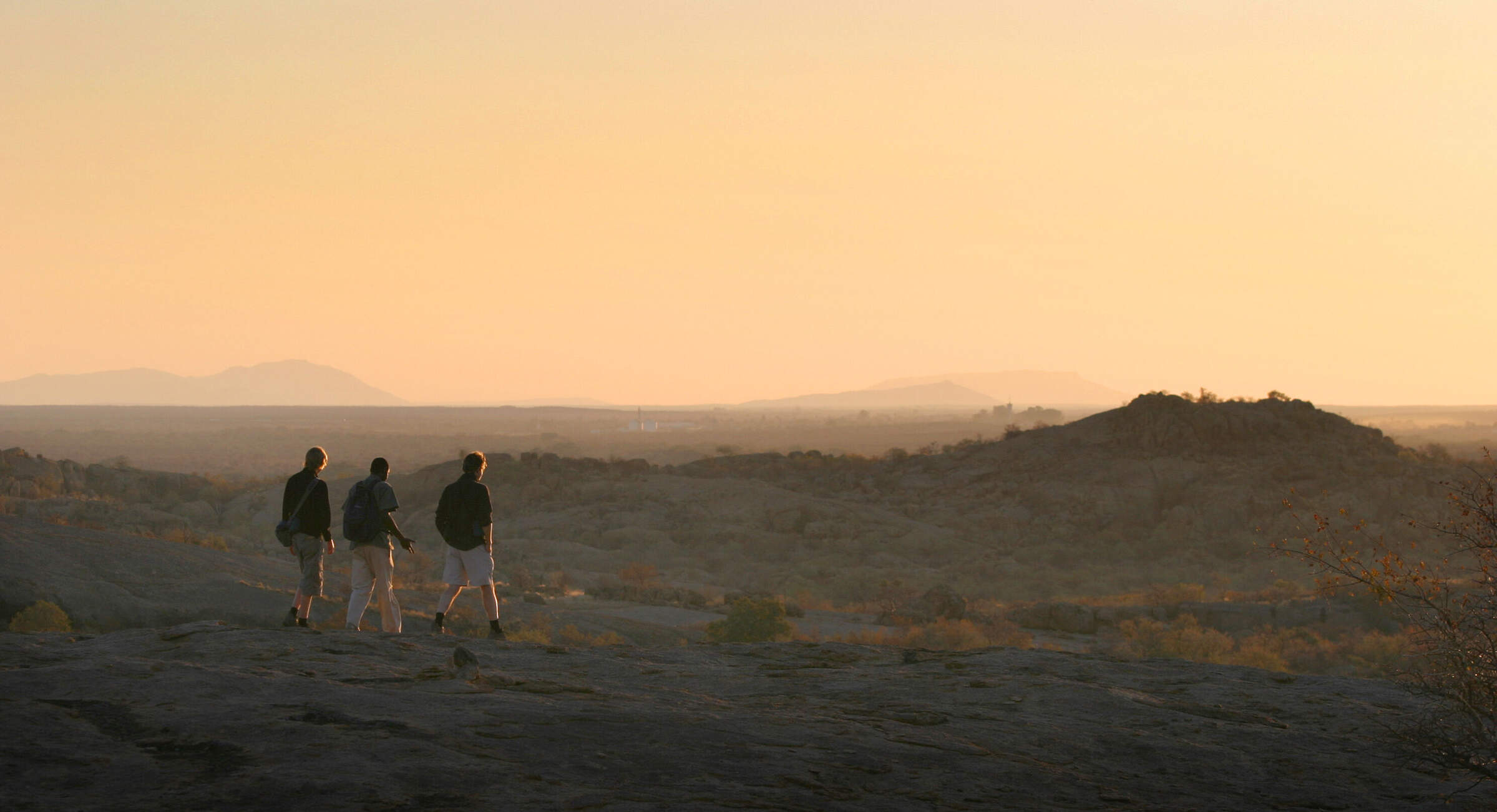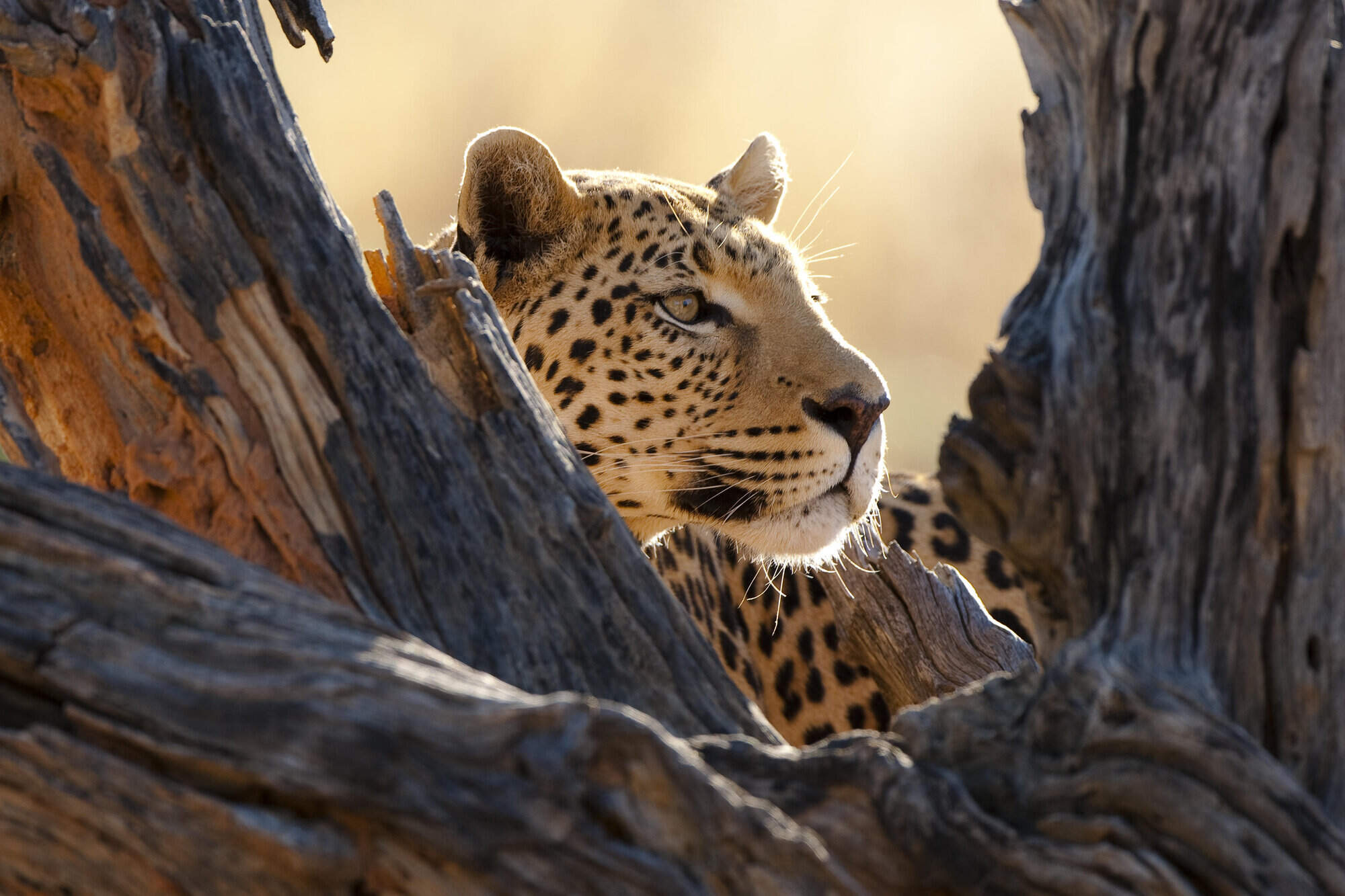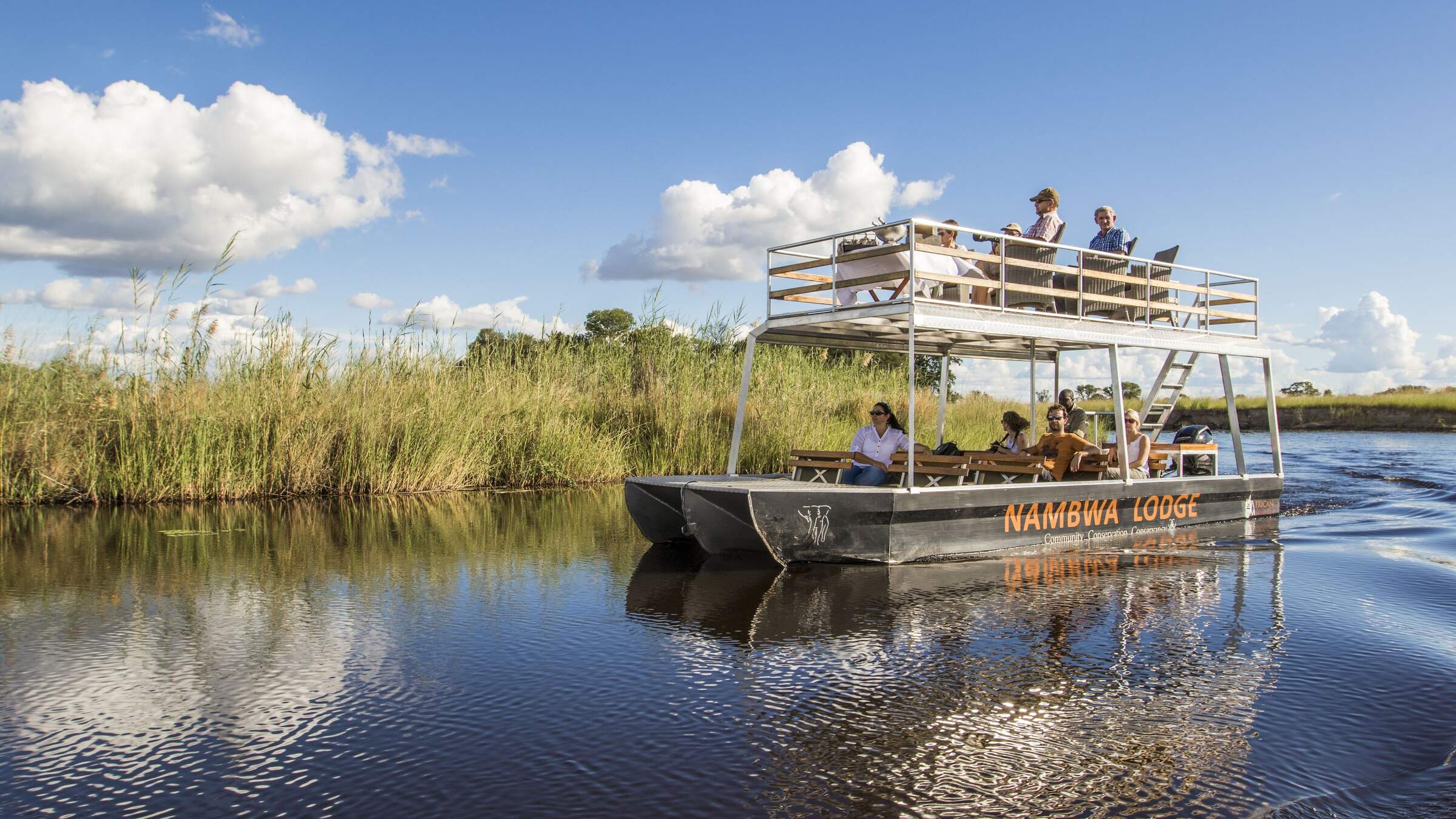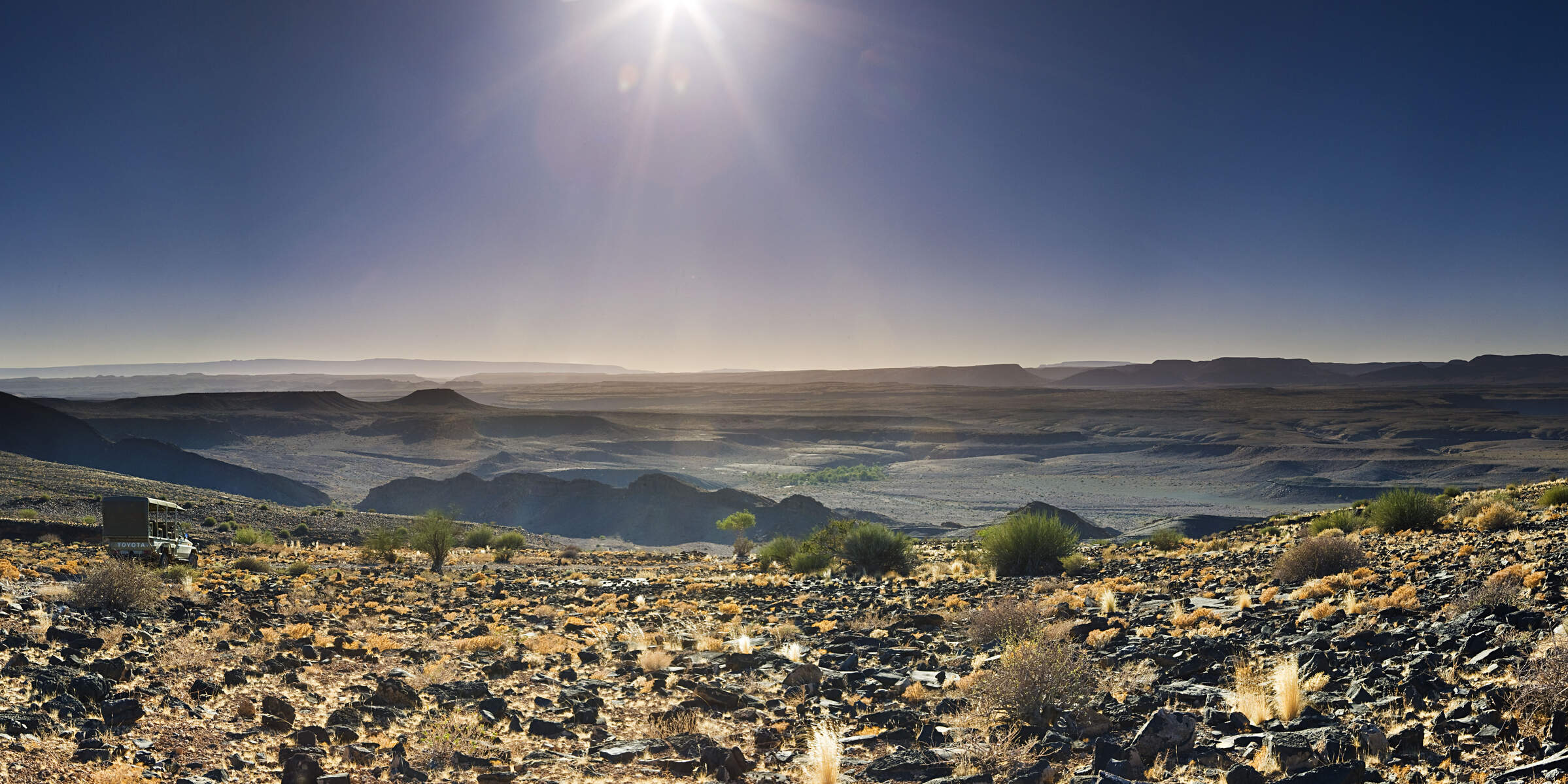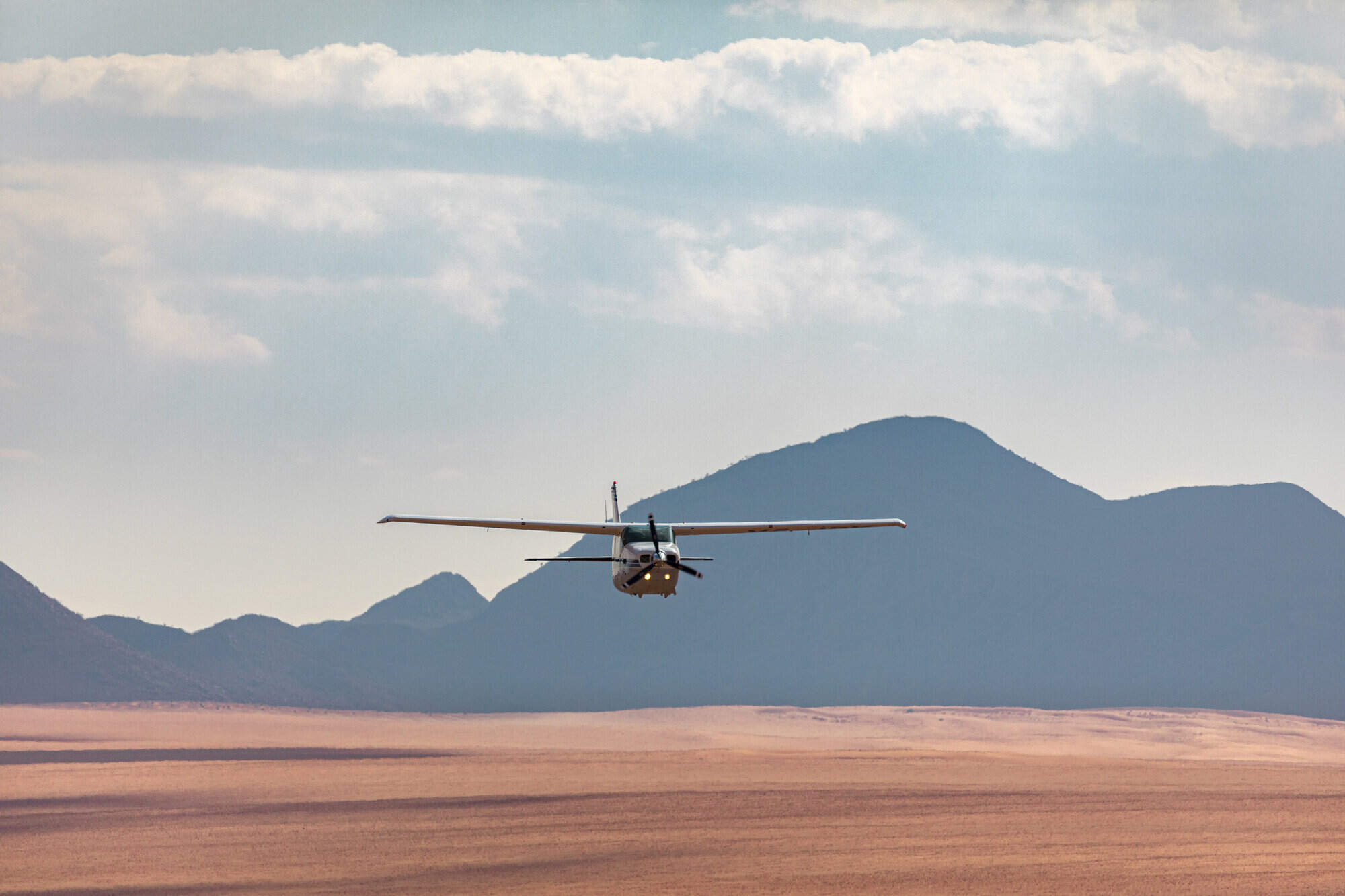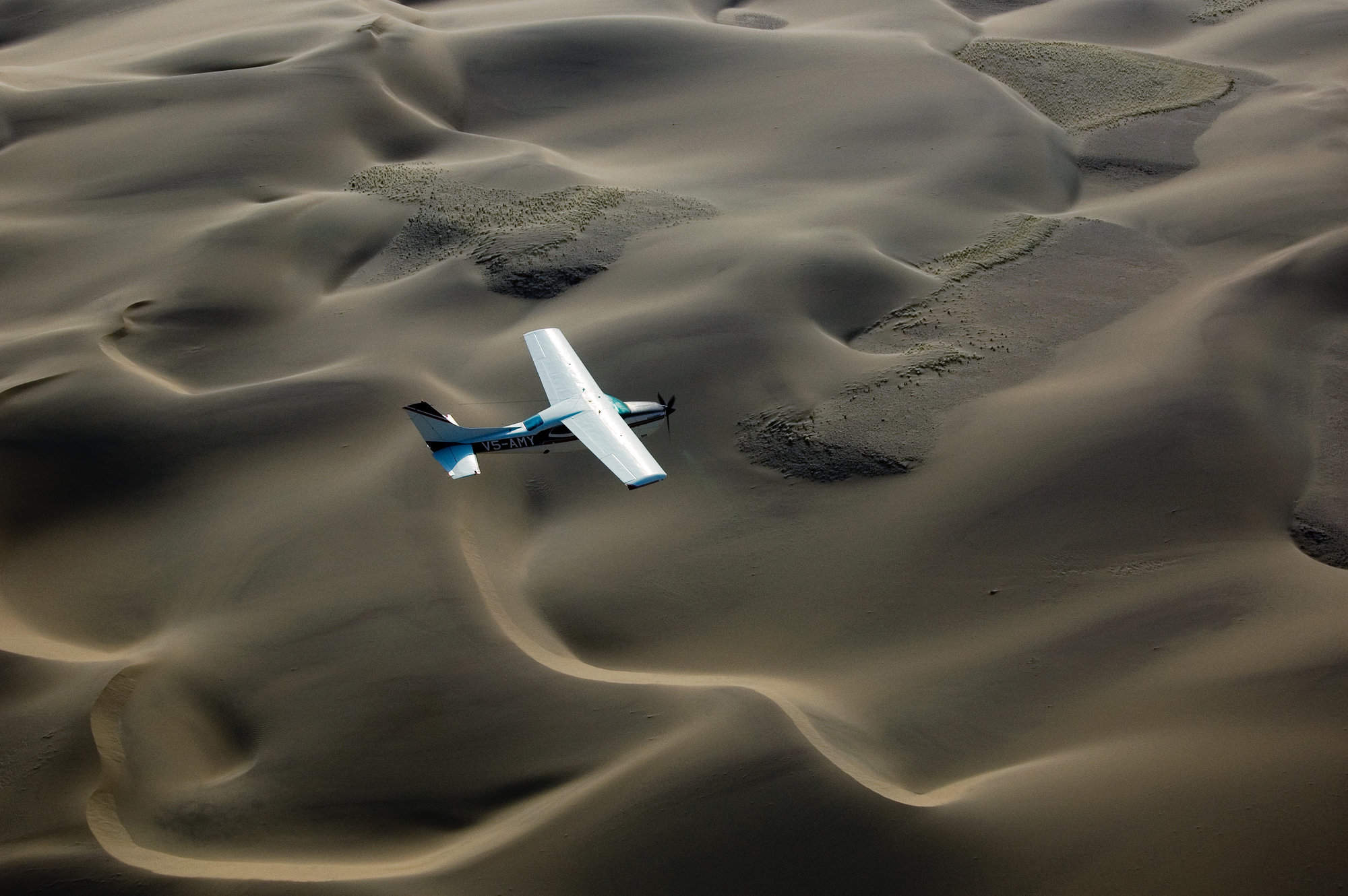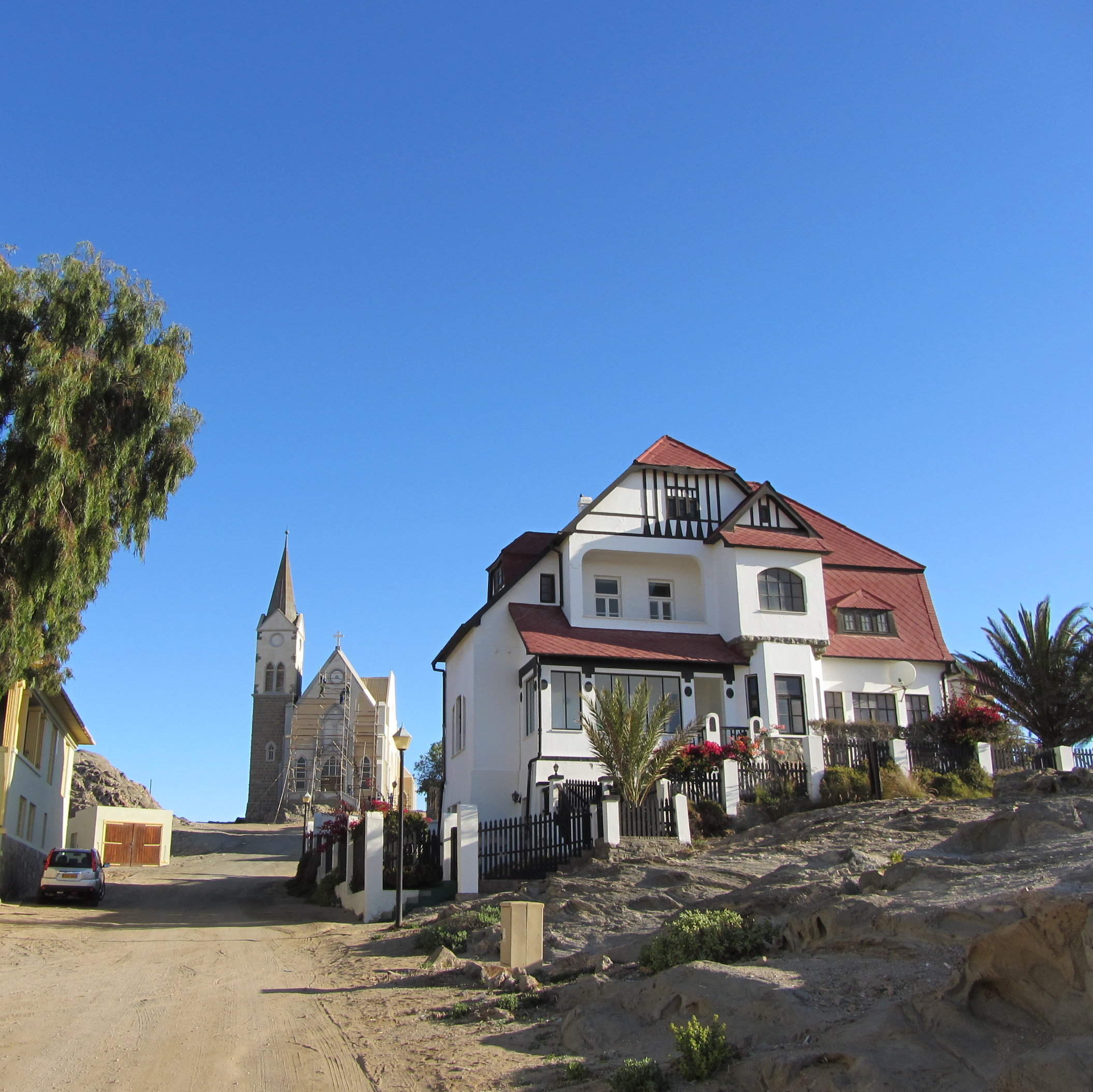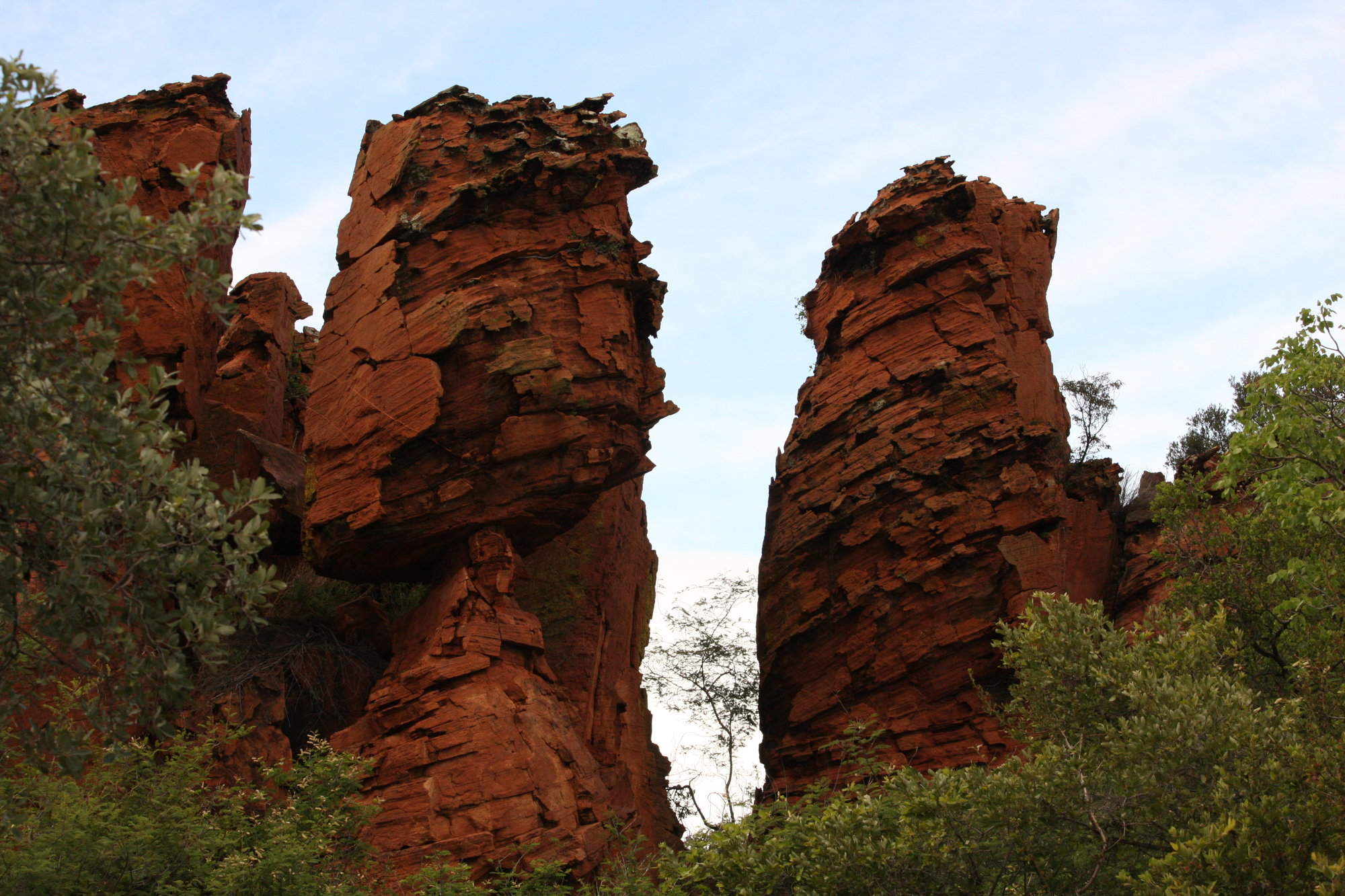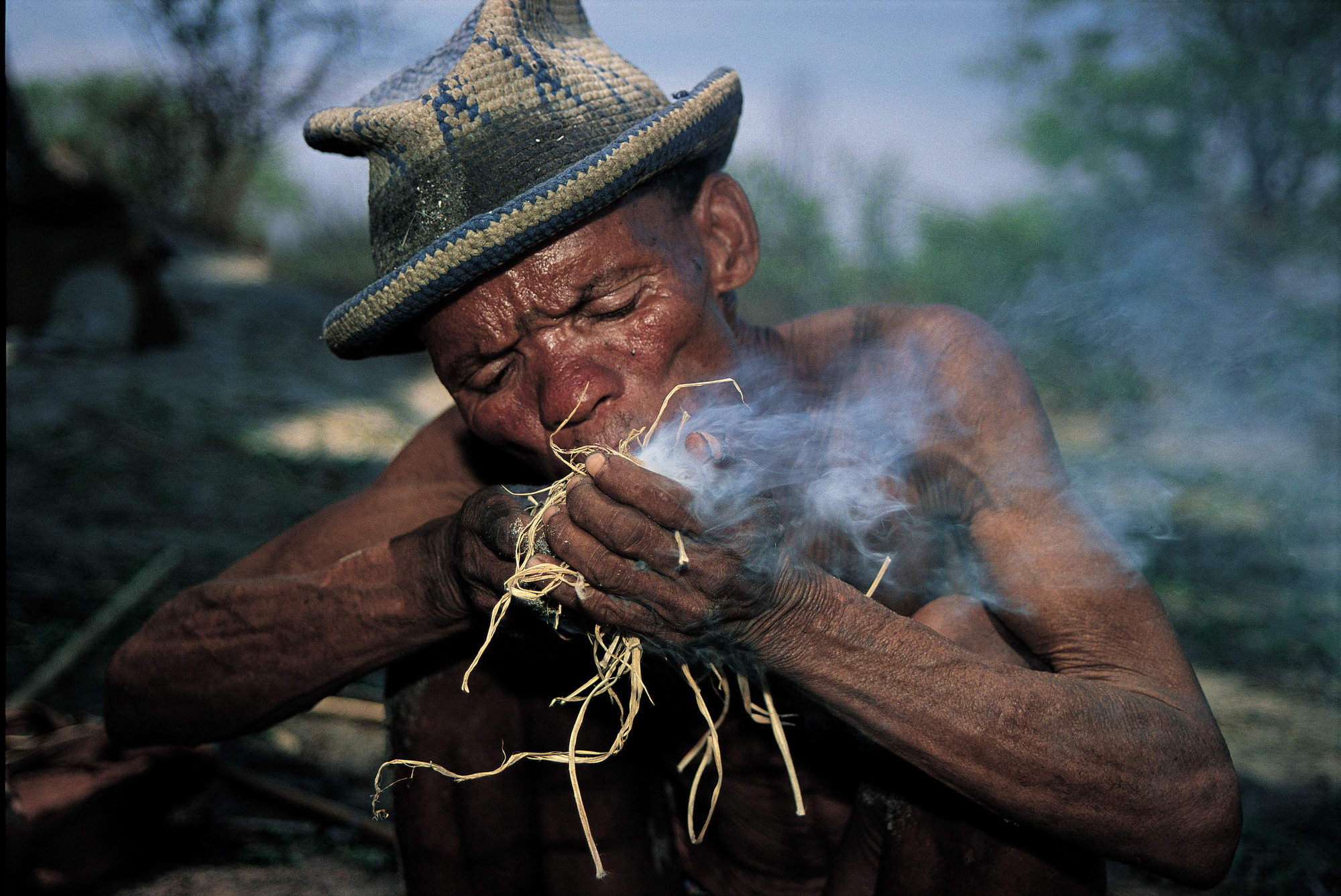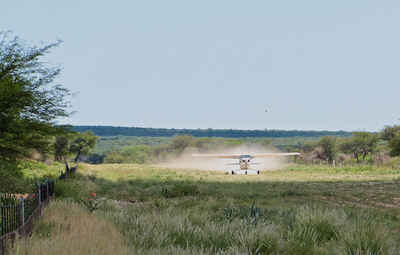
a short hop from Windhoek
Often used as a one night stop southern Namibia has some hidden gems.
a picturesque grove of Quivertrees
Kalahari Desert is more vegetated then the Namib…
…it receives more rain than a normal desert should.
Southern Namibia
Southern Namibia
Where the Namib meets the Kalahari, swathes of soft grass carpet the red dunes, bringing life to this fossil desert.
It’s a vast, often overlooked area that sprawls across much of southern Namibia, presenting a very different picture to the neighbouring Namib.
This may not be a wildlife destination, but animals are to be found – if you know where to look. Springbok and oryx crop the waving grasses, giraffe browse drought-resistant trees, and meerkats congregate above their burrows as if to discuss the latest politics. The lucky few may even get to spot an aardwolf on its nightly hunt for insects.
Sparsely spread through this landscape are a number of individual lodges and guest farms, each with a different feel. In some, semi-tame meerkats are the biggest draw; others focus on their proximity to one of the region’s natural idiosyncracies, such as the balancing rocks of the Giant’s Playground, or the Quivertree Forest, whose stark, near-skeletal trees invite that perfect sunset photograph.
Prehistoric fossils vie for attention with ancient meteorite showers. A turreted colonial castle seems to rise up out of nowhere. Where else in Namibia would you find a volcanic crater, or even a first-class distillery?
To the west, the region is fringed by the Fish River, which is dammed in its upper reaches to create a huge lake, before continuing on into the majestic Fish River Canyon. West again, marking the edge of the red dunes, are the Tiras Mountains – and arguably one of the most scenic drives in Namibia. The south may seem always to be en route to somewhere else, but it’s well worth exploring in its own right.

Safaris visiting Southern Namibia
Just ideas, we'll always tailor-make a trip for you
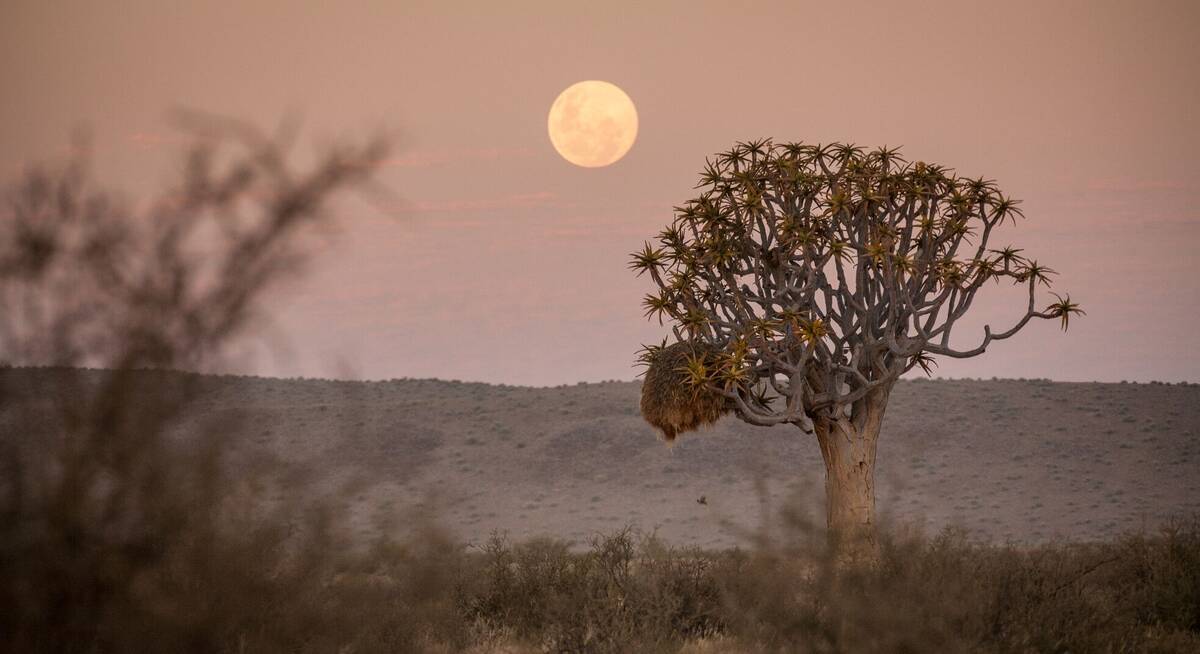
Quiver Tree Self-drive Safari
14 days • 7 locations
WINDHOEK AIRPORT TO WINDHOEK AIRPORT
An offbeat Namibian self-drive adventure exploring the epic Fish River Canyon and fascinating Kolmanskop ghost town in the south, before turning north via the classic highlights of Sossusvlei, Swakopmund and Damaraland.
US$3,810 - US$3,810 per person
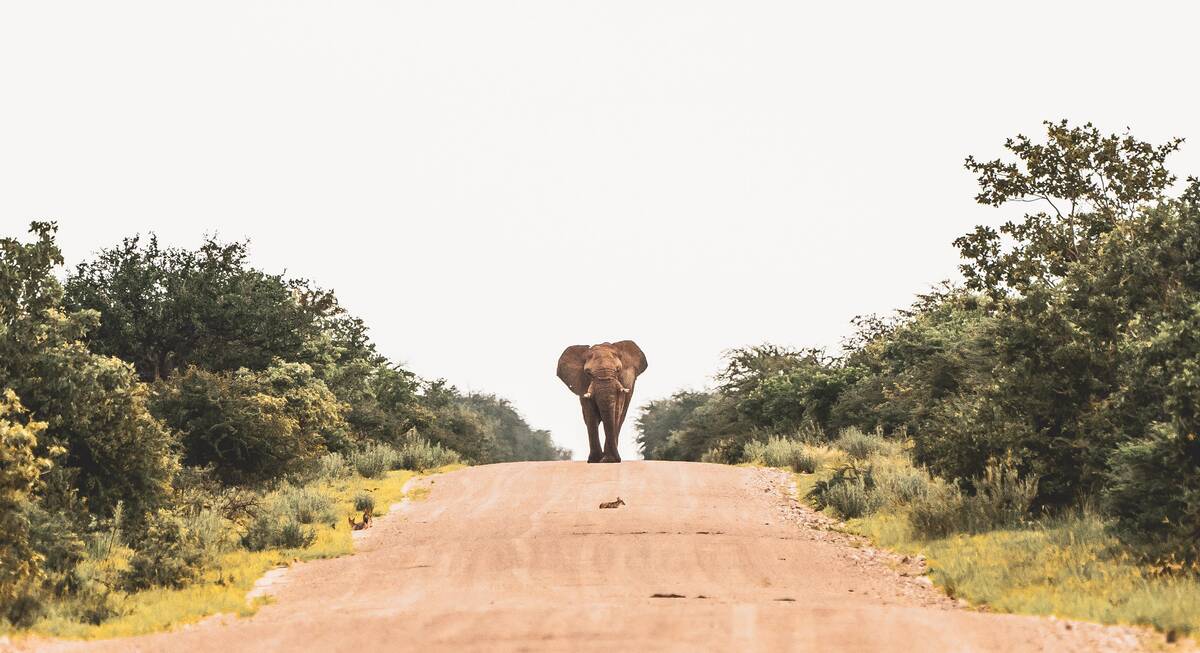
Black Wildebeest Self-drive Safari
19 days • 10 locations
CAPE TOWN AIRPORT TO WINDHOEK AIRPORT
Journey from South Africa’s cosmopolitan Cape Town to central Namibia’s Okonjima Nature Reserve during this self-driven safari. The route passes through a stunning variety of landscapes, offering access to this beautiful continent’s rich diversity.
US$4,380 - US$4,410 per person
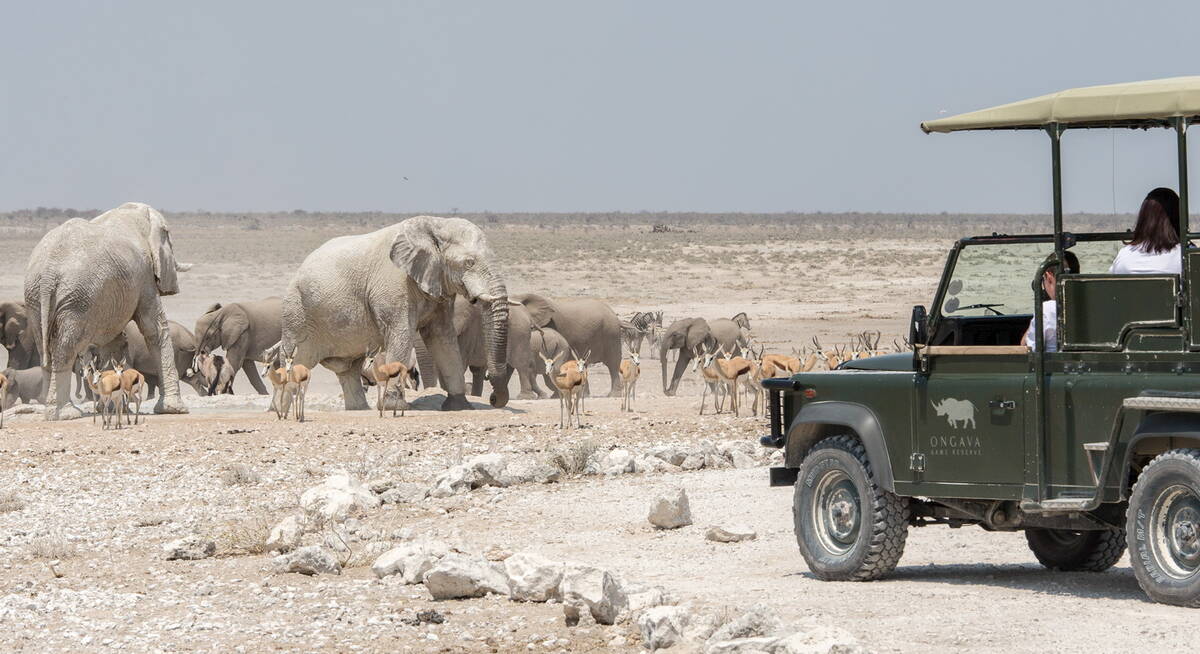
Brown Hyena Self-drive
14 days • 8 locations
WINDHOEK AIRPORT TO WINDHOEK AIRPORT
The perfect trip for those who want to mix the adventure and freedom of a self-drive with some of our favourite luxury camps in Namibia and a great mix of activities.
US$10,120 - US$10,250 per person
Most recent reviews of our safaris to Southern Namibia
Click below to browse all 443 reviews from Southern Namibia. All from our travellers; all are in full & unedited.
Arrived 2 Jun 2025, 14 nights
"Our Jun 2025 family trip to Namibi"
Overall rating: Excellent
Arrived 6 May 2025, 15 nights
"My May 2025 trip"
Overall rating: Excellent
Arrived 1 May 2025, 19 nights
"My May 2025 trip"
Overall rating: Excellent
Arrived 15 Mar 2025, 20 nights
"My March 2025 trip"
Overall rating: Excellent
Arrived 15 Dec 2024, 16 nights
"My Dec 2024 trip"
Overall rating: Excellent
Arrived 7 Dec 2024, 12 nights
"My Dec 2024 trip to Namibia"
Overall rating: Excellent
Arrived 20 Oct 2024, 20 nights
"My Oct 2024 trip"
Overall rating: Excellent
Arrived 13 Oct 2024, 15 nights
"My Oct 2024 trip"
Overall rating: Excellent
Arrived 21 Sep 2024, 17 nights
"My Sep 2024 trip"
Overall rating: Excellent
Arrived 16 Sep 2024, 13 nights
"My Sep 2024 trip"
Overall rating: Excellent
Where to stay in Southern Namibia
Our suggestions for safari camps in Southern Namibia
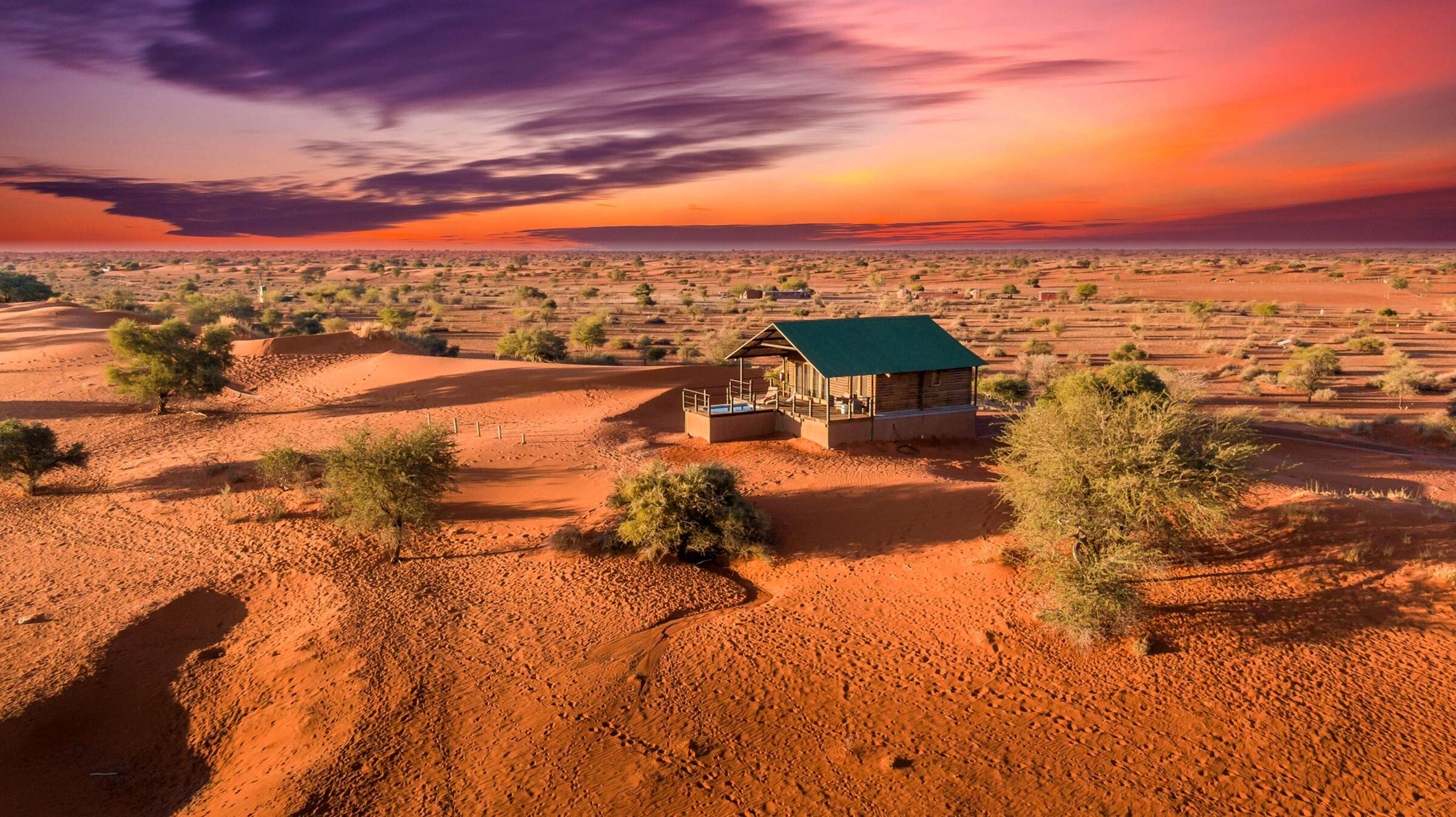
Bagatelle Game Ranch
Bagatelle is a welcoming guest farm in the Kalahari. Visit as a stopover heading south or to enjoy the photogenic red dunes and varied wildlife.
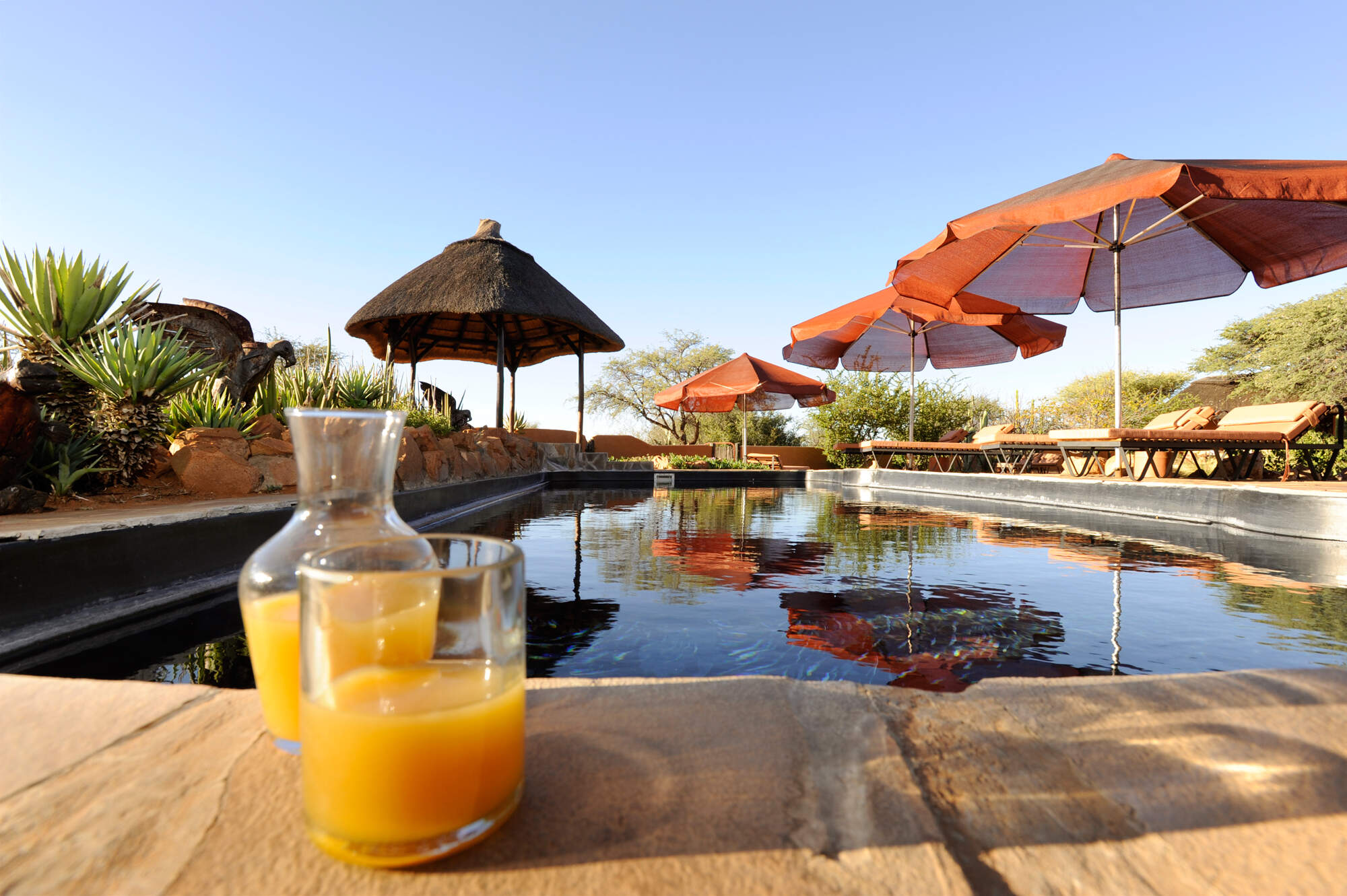
Eningu Clayhouse
Scarcely an hour from Windhoek airport, Eningu is an artistic place to unwind amid the vast silence of the Kalahari.
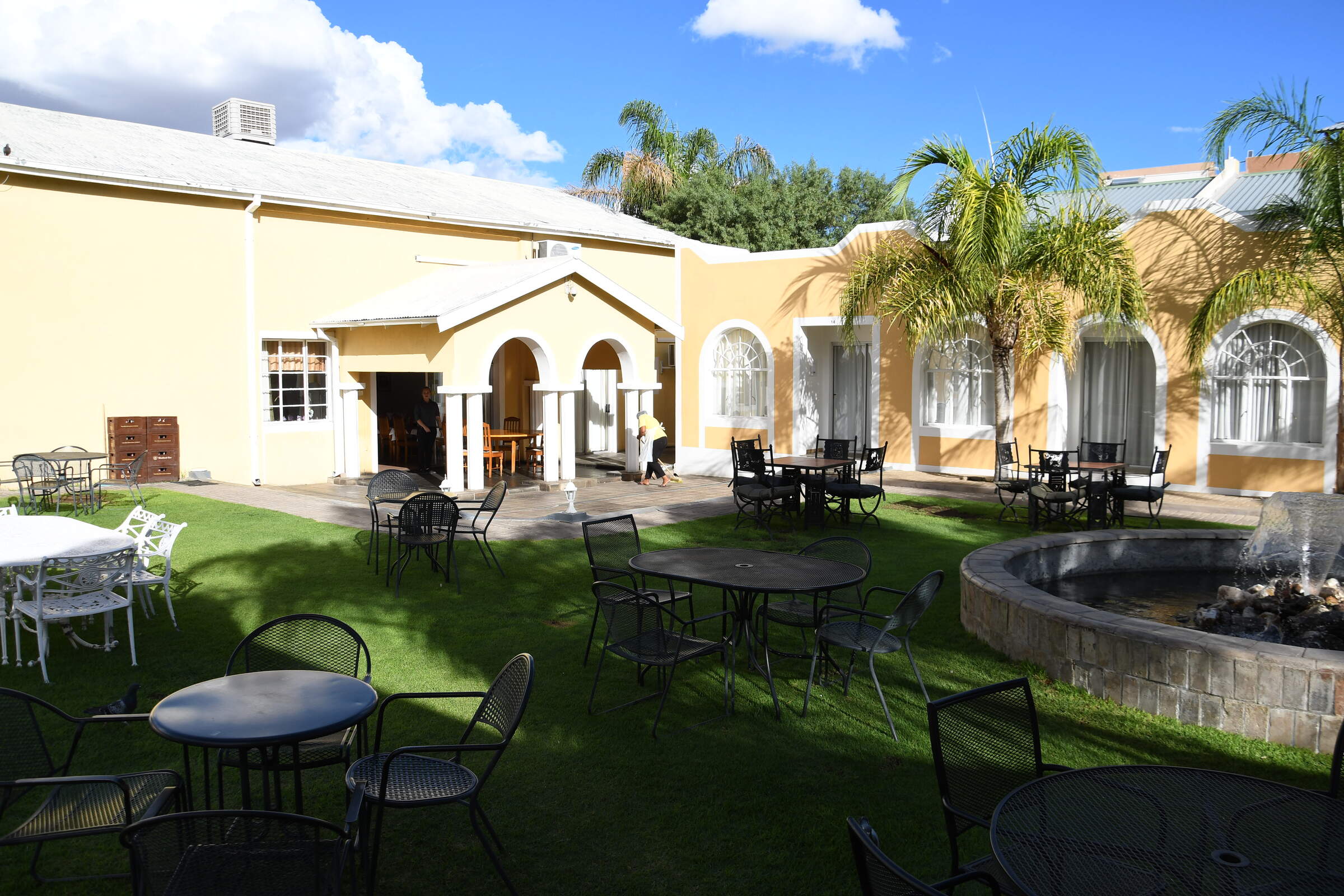
Central Lodge
Central Lodge offers clean, fresh and comfortable accommodation surrounded by a well-kept garden in the centre of Keetmanshoop.
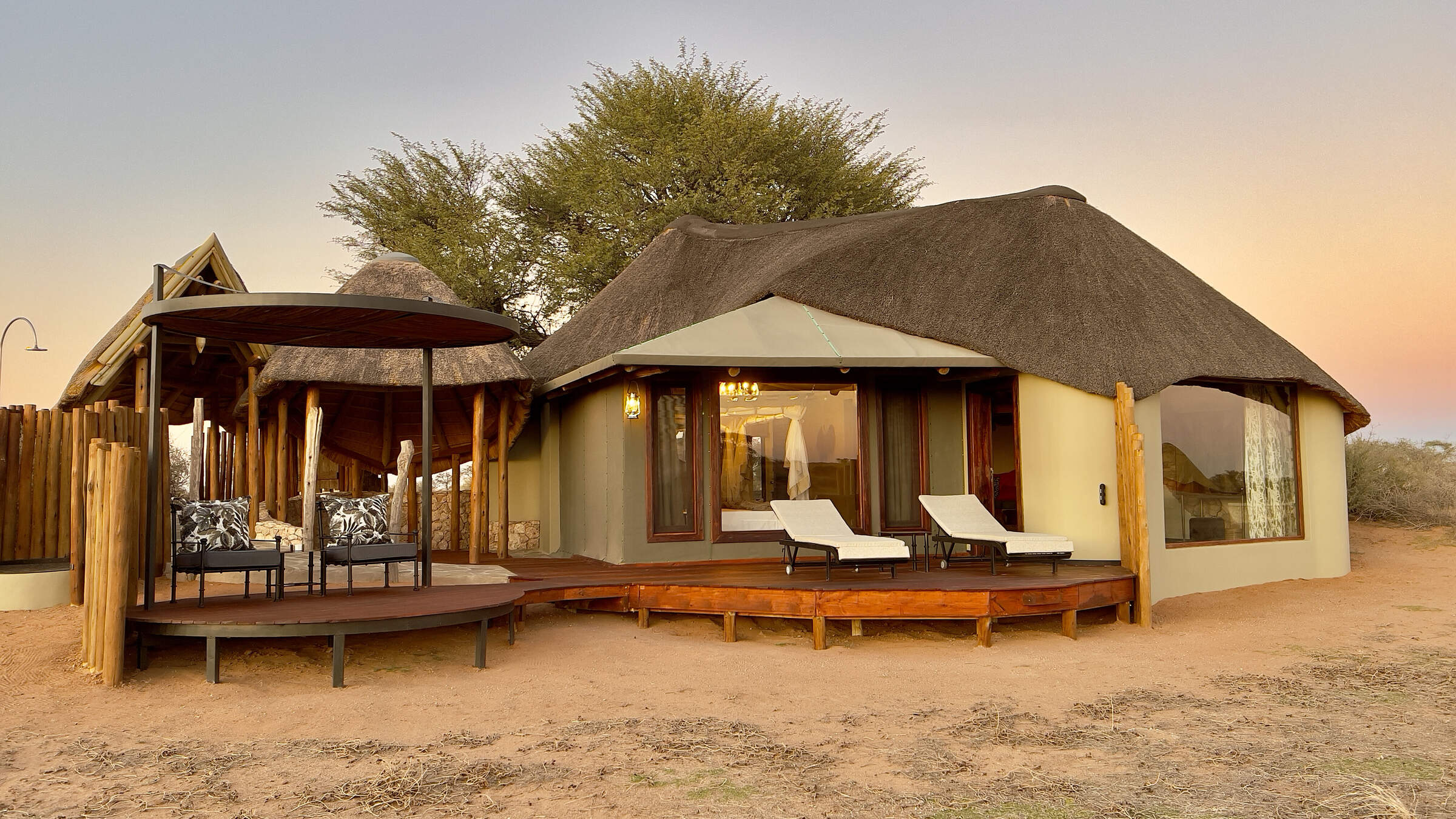
Kalahari Red Dunes
A good stop between Windhoek and Fish River Canyon, Kalahari Red Dunes is set around a dry lake on a private reserve, with excellent walking opportunities.
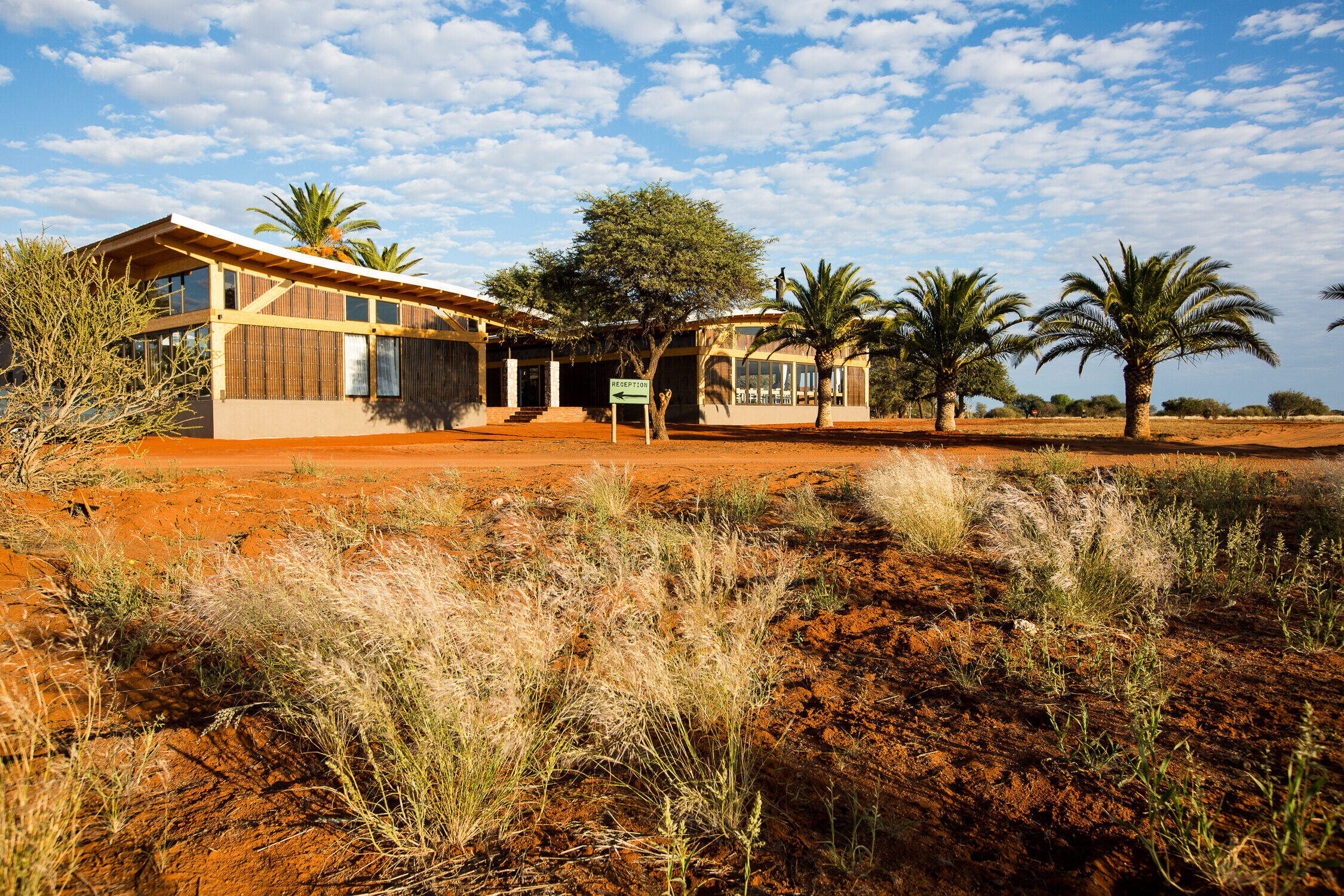
Kalahari Anib Lodge
Kalahari Anib Lodge is a comfortable stop between Windhoek and Fish River Canyon. Expect stunning Kalahari scenery, two swimming pools and lots of space.
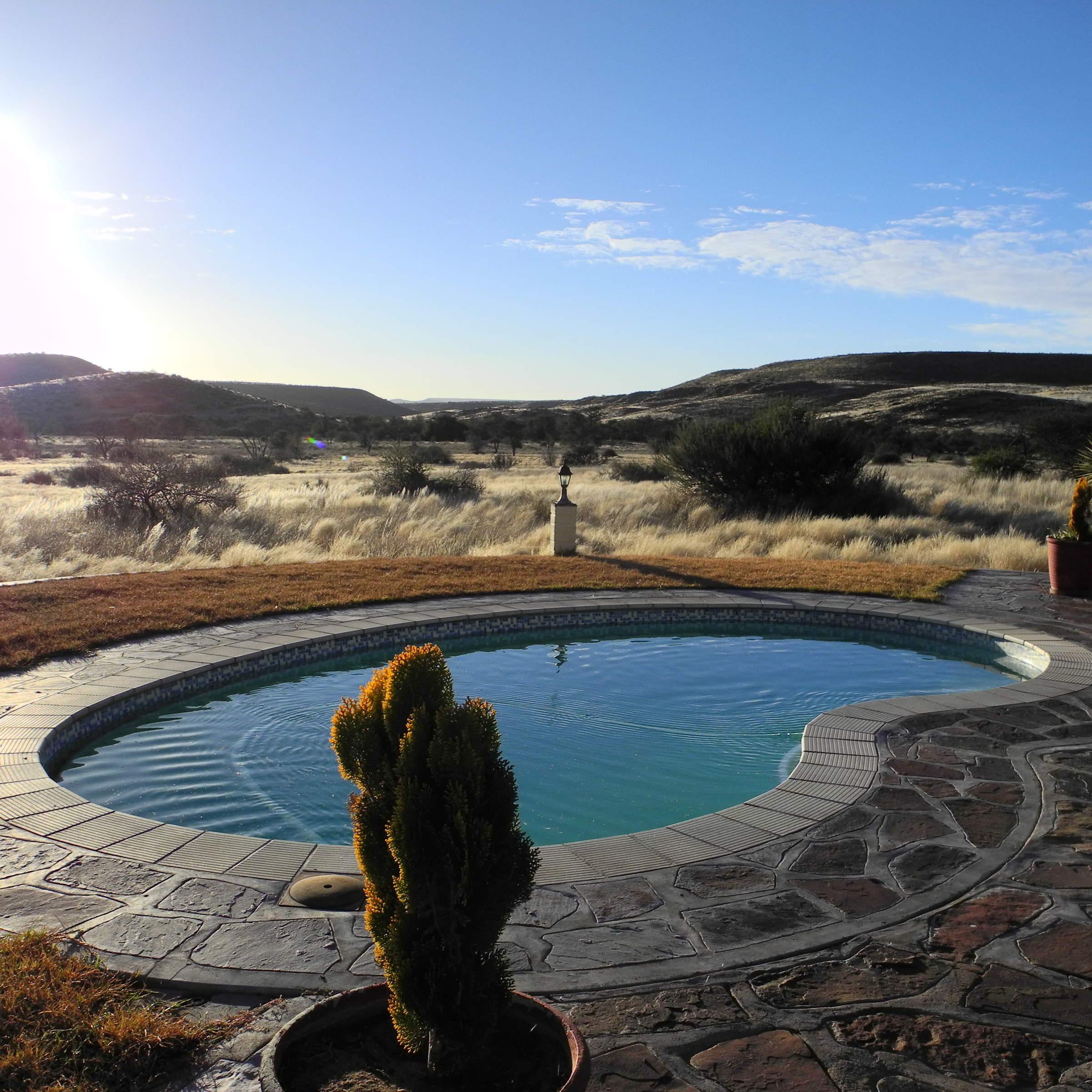
Dabis Guest Farm
For good farm hospitality, wholesome cooking and an interesting farm drive, Dabis makes a great stop en-route from Lüderitz to the Sesriem area.
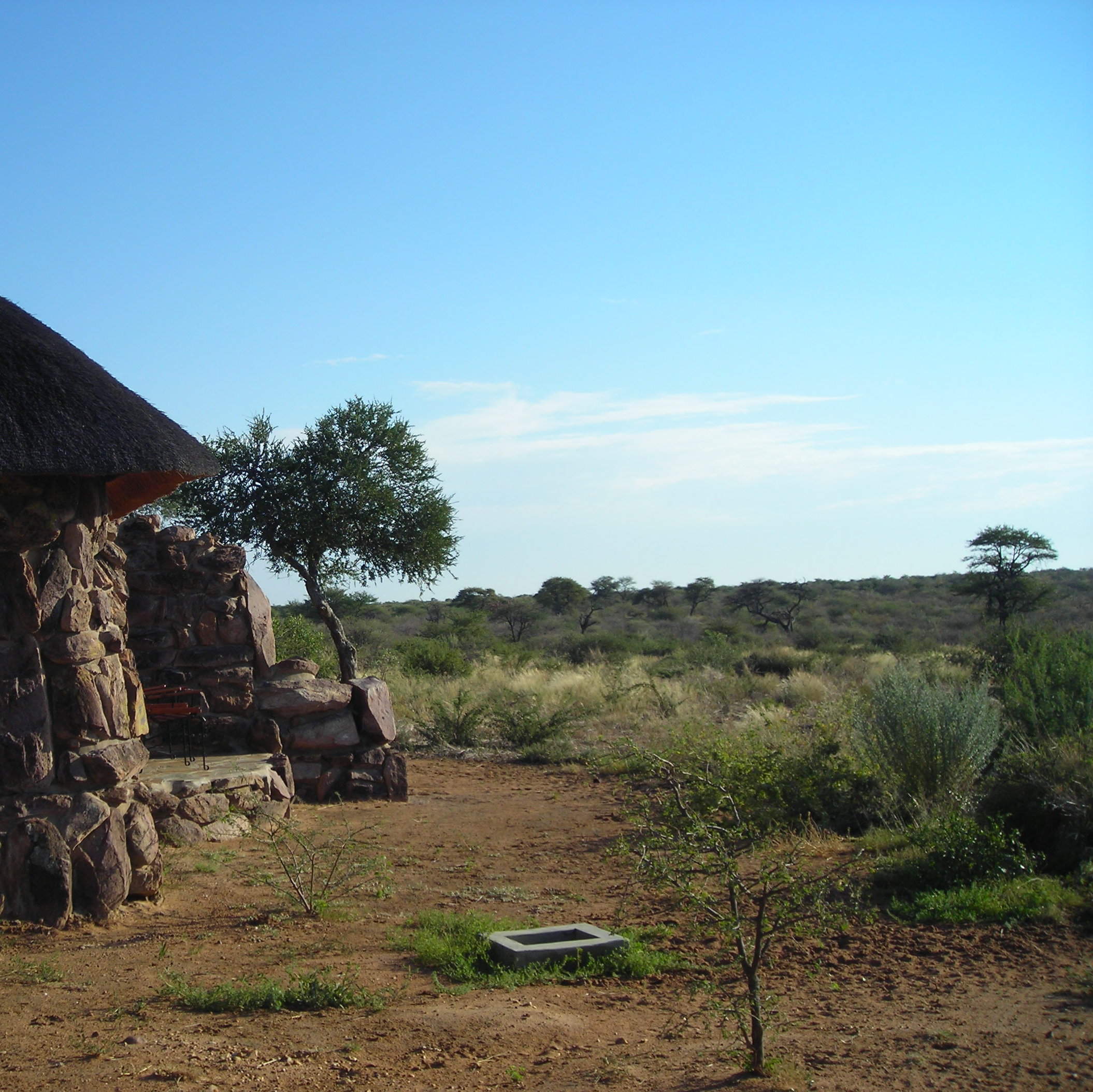
Kalahari Bush Breaks
Kalahari Bush Breaks, situated on the edge of the Kalahari Desert, is a perfect stop-over whilst driving between Namibia and Botswana.
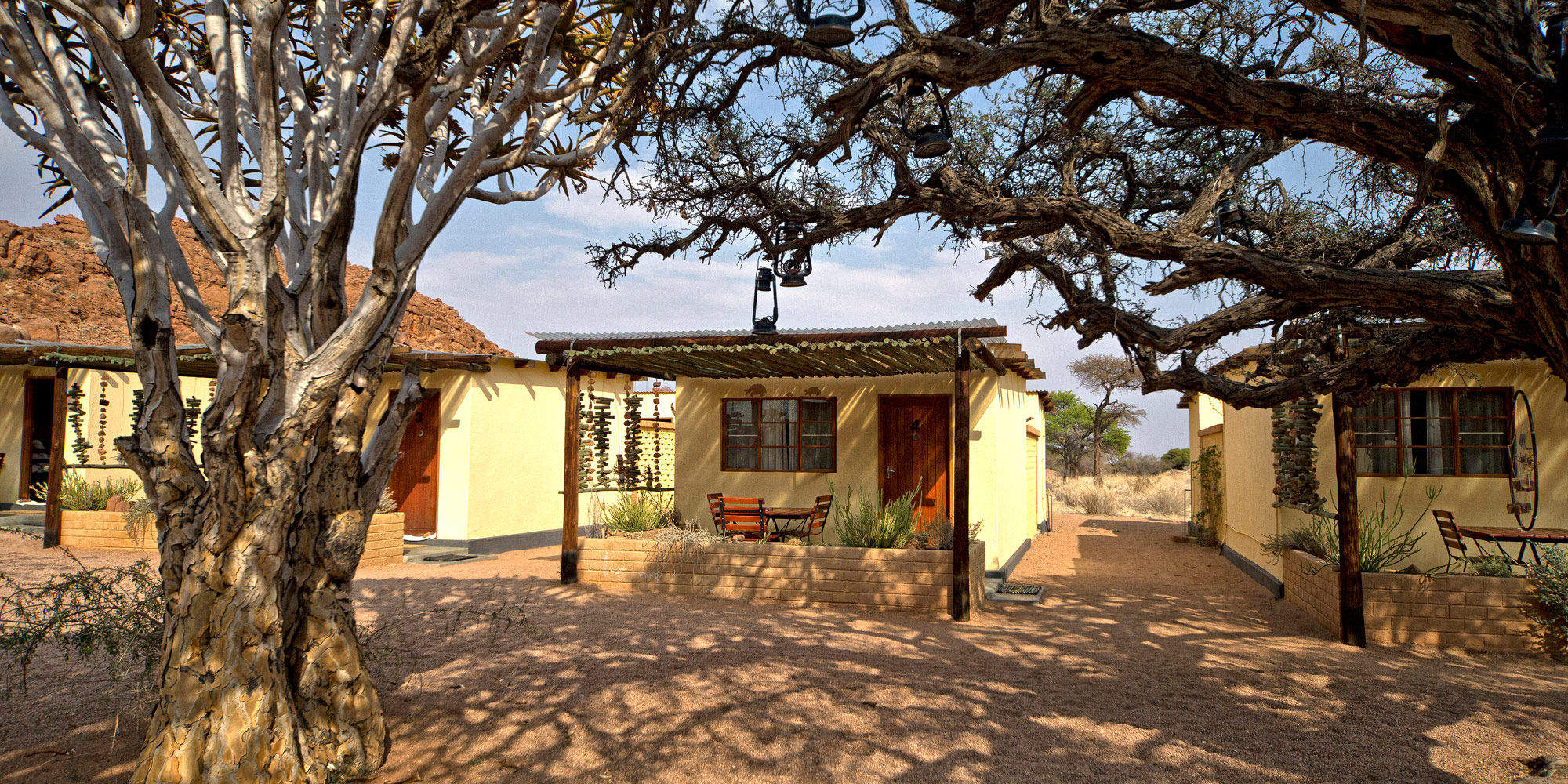
Namtib Desert Lodge
A charming owner run lodge, located off the scenic D707, Namtib Desert Lodge is a convenient stop en route from the south to Sossusvlei.
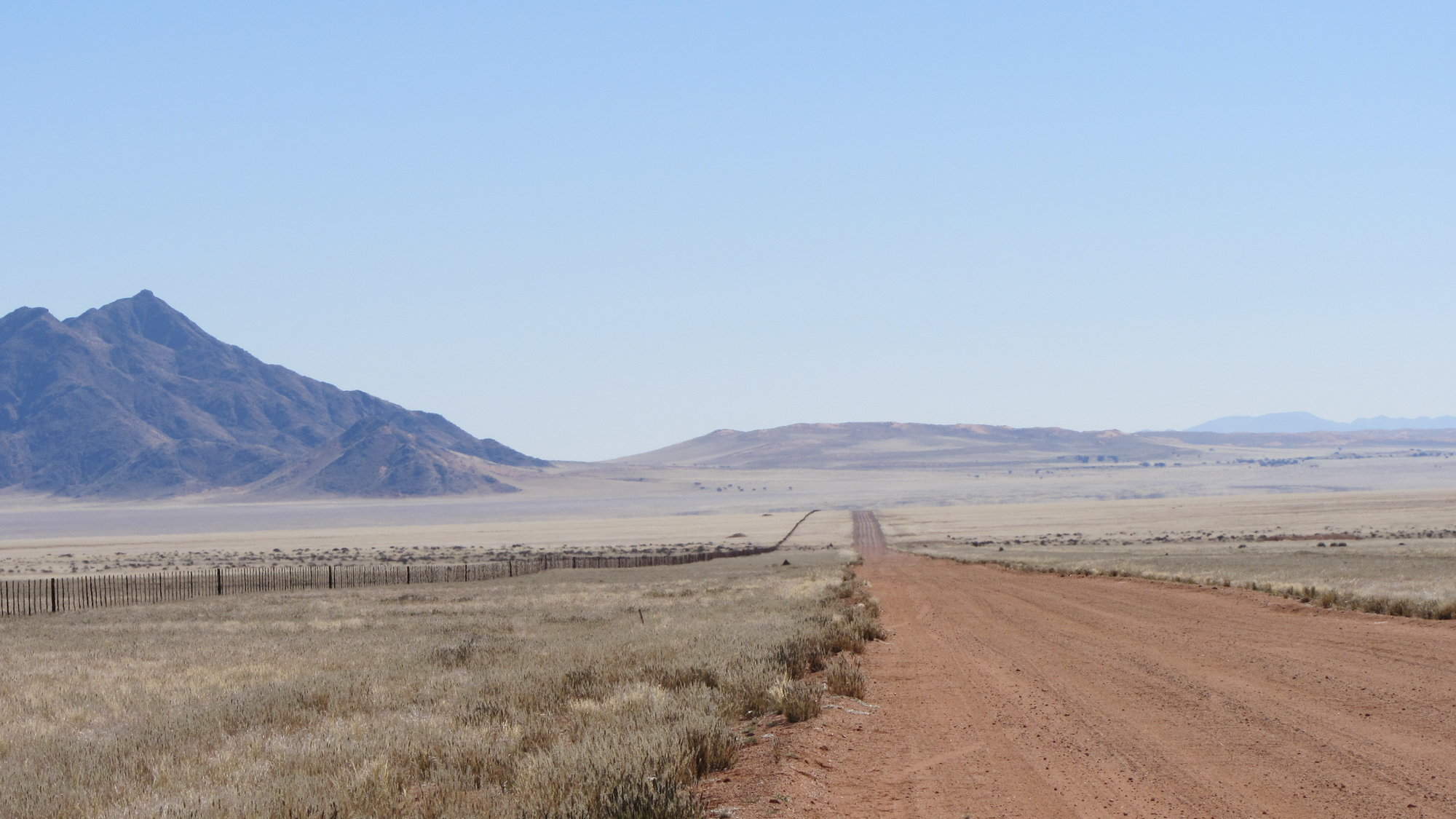
Hotel Helmeringhausen
Hotel Helmeringhausen is a unique hotel in the heart of southern Namibia's farming district and makes a good stopover option.
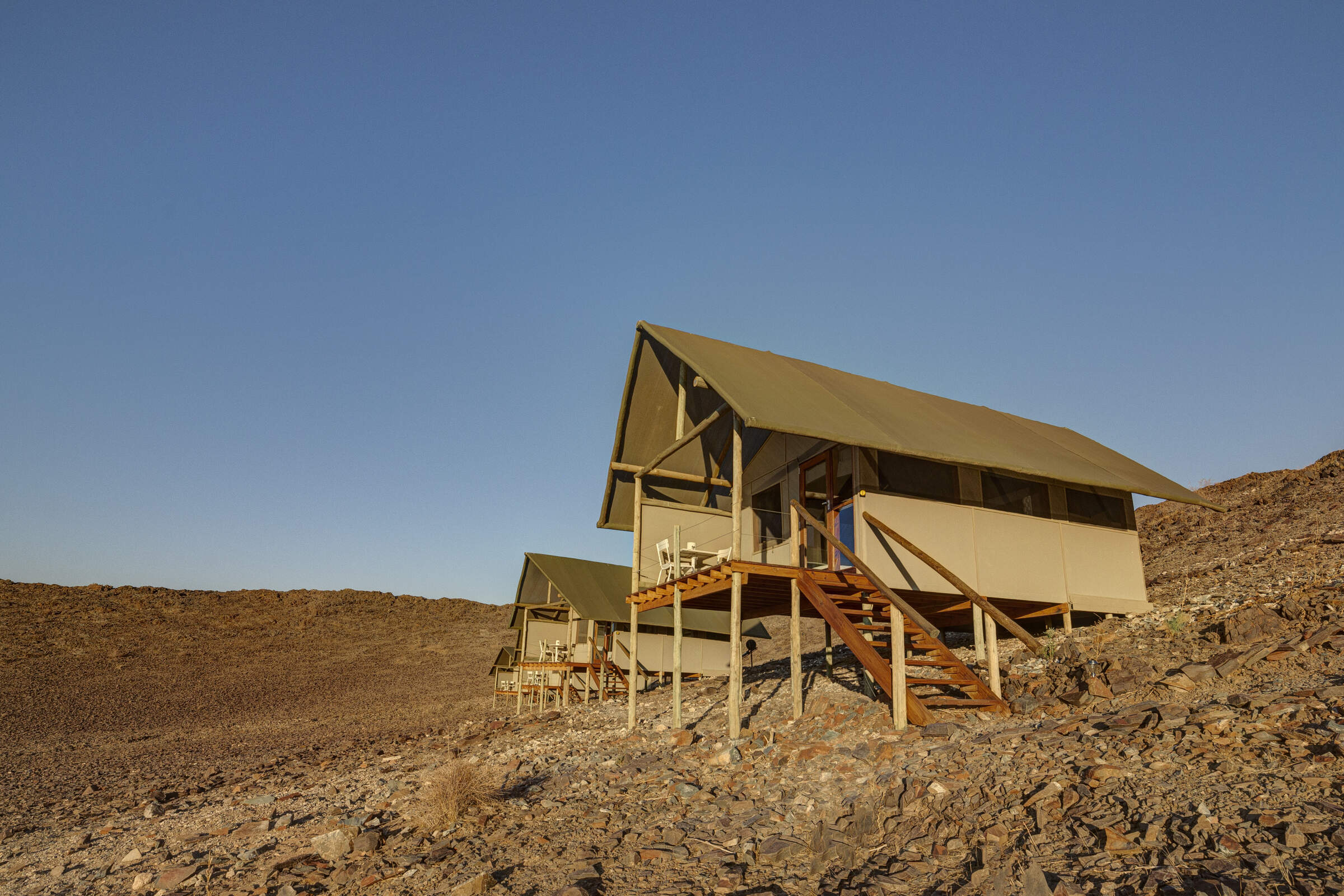
Kanaan Desert Retreat
The tented Kanaan Desert Retreat offers a range of activities against the beautiful backdrop of the Namib Desert.
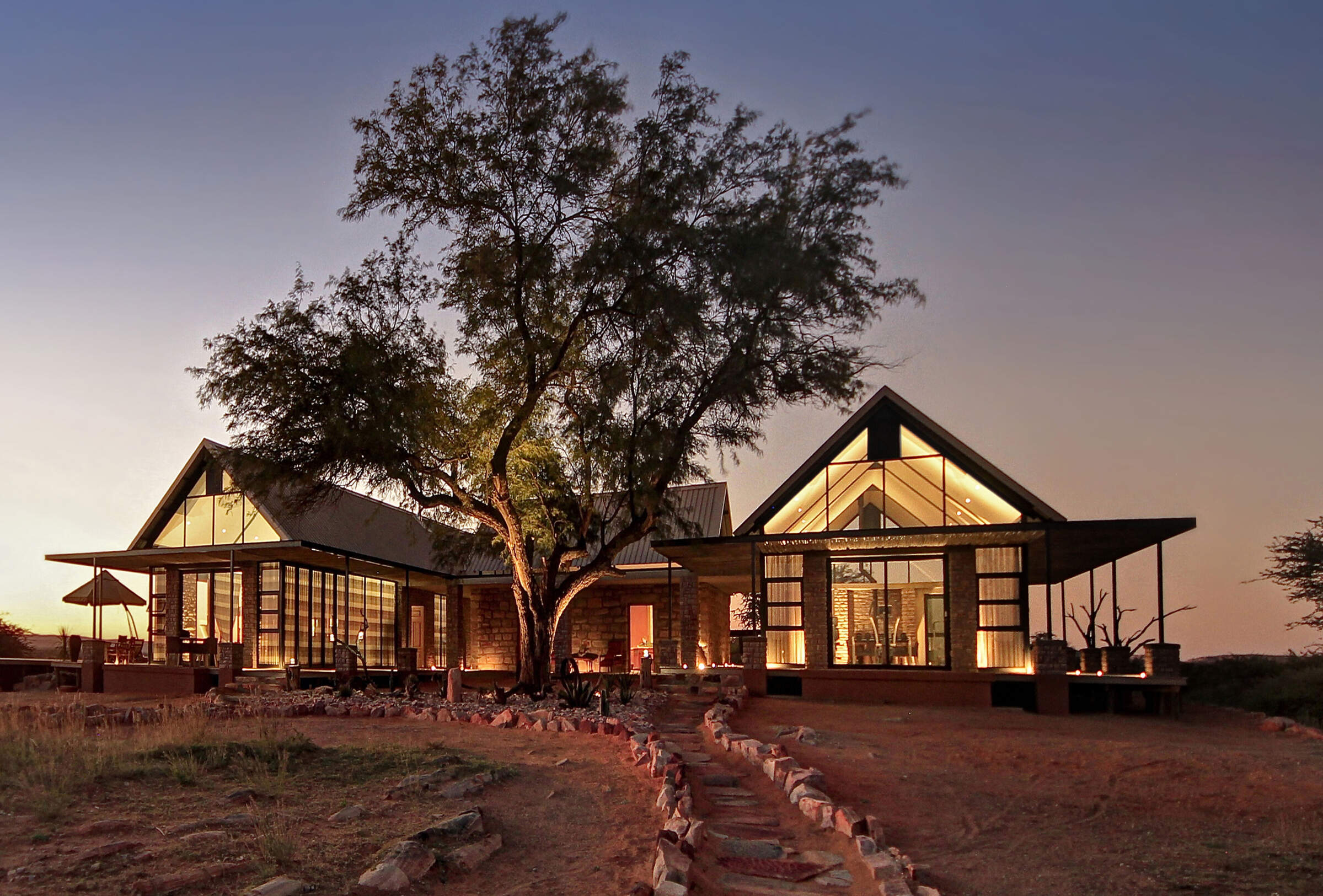
Otjimbondona
Otjimbondona Kalahari is a luxurious, peaceful and relaxing lodge conveniently located close to Windhoek's International Airport.
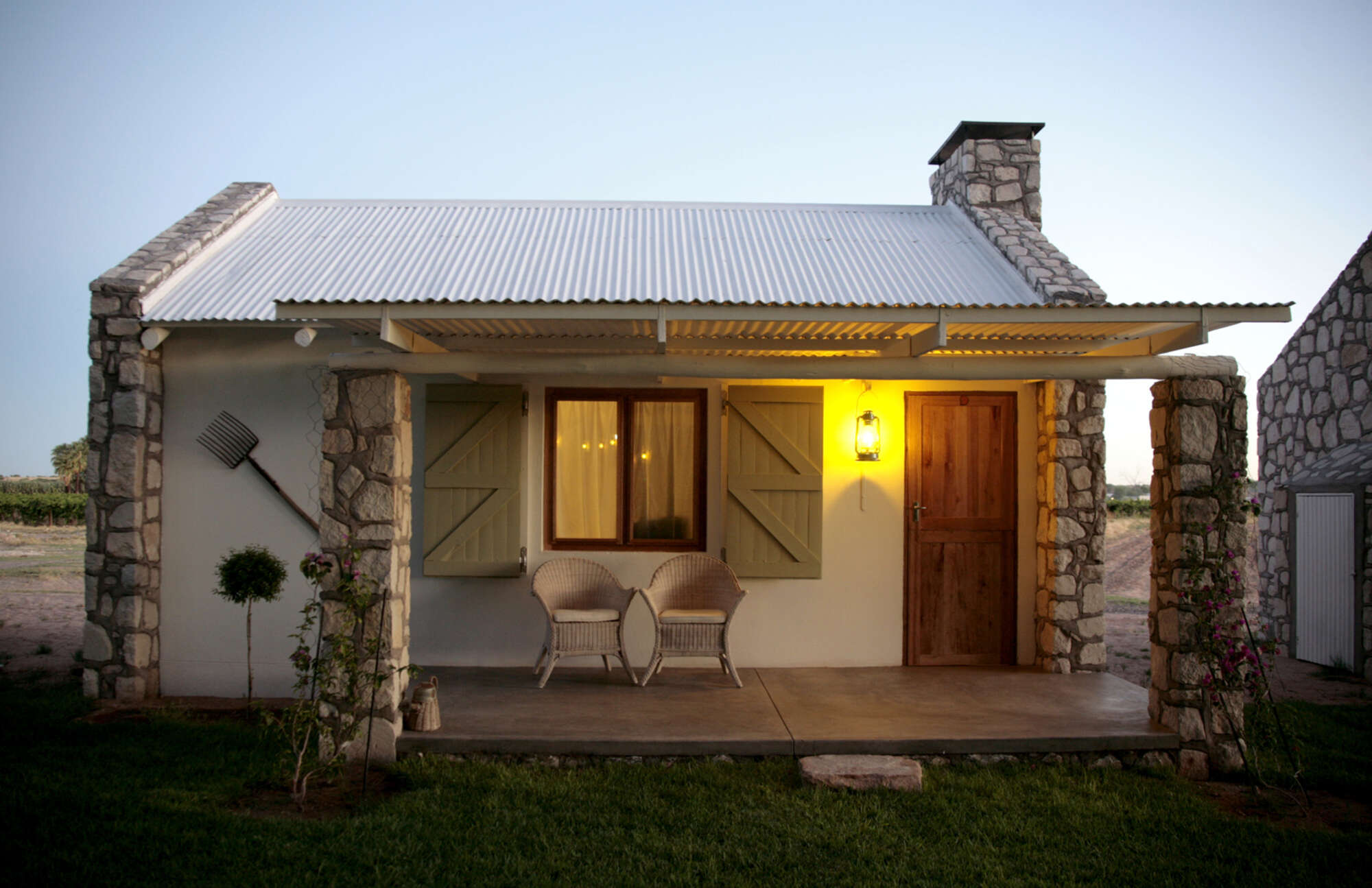
Kalahari Farmhouse
Kalahari Farmhouse, located in Stampriet has comfortable chalets in the gardens of an old farmhouse.
Our travellers’ wildlife sightings in Southern Namibia
This is their success for sightings in Southern Namibia. Click on a species for more detail. How we work this out.

75% success

66% success

61% success

54% success

52% success

51% success

26% success

10% success

4% success

1% success

0% success

0% success

0% success
When to go to Southern Namibia
Our month by month guide: What it's like to visit Southern Namibia in Namibia
Jan
Feb
Mar
Apr
May
Jun
Jul
Aug
Sep
Oct
Nov
Dec
Namibia in January
January is at the heart of Namibia’s rainy season. However, as you’d expect from a country dominated by desert and semi-desert environments, the rains are often (but not always) weak and usually quite localised. Some days will be clear, the strong sun raising temperatures to around 30ºC/86ºF; on others humidity and clouds build, sometimes culminating in spectacular thunderstorms. In extreme cases, these generate flash-floods which race down the beds of ephemeral rivers.
Across the country, the greening landscape makes a refreshing change, especially in desert areas. Many birds are in full breeding plumage and migrant species are here in force. In the north, where the rains are more reliable, the abundant water and food allows wildlife to disperse, making it trickier to spot.
- Variable weather: clear, hot & dry, or cloudy & humid with some rain
- Occasional, highly localised thunderstorms
- Many animals with young; birdlife at its most spectacular
- Wildlife dispersed & harder to see, especially in Etosha & the Caprivi
- Very few tourists (apart from the New Year) so rates mostly low
Our view
This is not a great time to visit
Weather in January
Namibia in February
February is the wettest month, but as Namibia is dominated by deserts, the rains are often weak and patchy. The variation in weather across Namibia is significant, too; the central highlands and Caprivi can see some heavy rain. More typically, some February days are clear with a hot, strong sun; others are cooler as cloudy skies build and, sometimes, culminate in short, spectacular thunderstorms. Occasionally these generate flash-floods, bringing ephemeral rivers to life and making travel more challenging.
Across the country, the landscape feels green and alive; insects and smaller animals are more easily seen, and many birds and animals are raising their young. However, small pools in the bush and thicker vegetation can make it hard to spot the wildlife.
- Variable weather: clear, hot & dry or cloudy & humid with some rain
- Occasional localised thunderstorms meander over the landscape
- The bush feels alive; birdlife is at its most spectacular
- Wildlife in Etosha & Caprivi is dispersed & harder to see
- Few tourists, so rates usually at their lowest
Our view
This is not a great time to visit
Weather in February
Namibia in March
March usually sees Namibia’s main rains tailing off, although actual precipitation varies hugely across the country and can be unpredictable from day to day. Many days will be clear, with a strong sun driving temperatures up. On others, clouds will build, and the late afternoon may see a short, spectacular thunderstorm. Such deluges reduce in both frequency and volume as the month progresses.
Across the country, landscapes are often vivid: a “green and pleasant land”. Many birds and animals are finishing raising their young, so smaller animals and insects are in evidence. In the north, where rains are generally heavier, pools in the bush and thicker vegetation can make it difficult to spot larger animals.
- Variable weather: clear, hot & dry or cloudy & humid with some rain
- Afternoon thunderstorms less common as March progresses
- Animals looking sleek and well-fed, after 3–4 months of plenty
- Wildlife in Etosha & Caprivi is dispersed & harder to see
- Few tourists visit during March, so rates often low
Our view
A good time to visit, with pros & cons
Weather in March
Namibia in April
Typically, April is dominated by dry weather; there’s an ever-decreasing chance of rain. Temperatures are now below their peak and continue to fall. Even so, days remain pleasant and warm, but there might be a slight chill in the air at night. The rains usually leave many parts of the country verdant and green, so animals are in fantastic condition – often with fast-growing young in attendance.
With the dust washed out of the atmosphere, photographers make the most of clear air, spectacular landscapes and healthy animals. Stargazers will have clearer night skies as the month progresses. In the game parks of Northern Namibia, water and food remain in plentiful supply, so finding big game can prove trickier than later in the year.
- Becoming drier &, especially at night, also cooler
- Few visitors, except around Easter, so rates remain low
- Wildlife in Etosha & Caprivi remains relatively hard to see
- Migrant birds have started to leave
- Fresh, clean air and often green, verdant landscapes
Our view
A good time to visit, with pros & cons
Weather in April
Namibia in May
By May, Namibia is usually drying out fast as the rains have ended. If they’ve been good, then the land remains green, but wildlife starts to congregate at more permanent water sources. Over much of the country the air quality and clarity can be amazing, making this an ideal month for photography.
Typical days are warm, with crisp, clear mornings and clear blue skies. Evenings are usually cool, and temperatures may dip below 10ºC (50ºF) overnight. Many lodges still charge “low season” prices, although with Namibia’s increasing popularity in recent years, some have started to introduce higher “shoulder season” rates.
May’s good-value rates, increasingly good wildlife sightings, beautiful landscapes and crystal-clear air combine to make this one of our favourite months in Namibia.
- Lovely weather: dry, warm days & cool nights
- The country is drying out although many landscapes remain green
- Fantastic air clarity – ideal for keen photographers
- Visitor numbers are often still low, mirrored by lodge rates
- Wildlife is starting to congregate more around remaining water
Our view
A very good time to visit
Weather in May
Namibia in June
Namibia is dry again. Skies are blue and usually largely cloudless. Days are lovely: warm and dry; nights are cold, sometimes below freezing in the desert. Most swimming pools in Namibia are always outdoors, making them too cold for all except the very dedicated.
Take a warm hat and gloves for game drives, where dawn and dusk will feel particularly chilly. In the north, especially Etosha, wildlife viewing is now into its dry-season pattern, focusing around the waterholes – though the park is still not busy.
Photographers come for superb air clarity, with minimal dust or smoke in the air. Historically, June rates have been low. However, with Namibia’s increasing popularity many lodges now count it amongst their “high-season” months, and request higher prices.
- Clear, bright days with blue skies; cold nights, mornings & evenings
- Great air quality, especially welcome for photographers
- “Shoulder season” for some lodges: lodge rates moderate
- Wildlife gravitates to waterholes, making game-viewing productive
- Some greenery in the landscape, depending on the last rains
Our view
A very good time to visit
Weather in June
Namibia in July
Reliably warm daytime temperatures (upwards of 20ºC/70ºF) and good wildlife sightings make this a popular month to visit Namibia. Rain would be very unusual indeed and clear skies make for great photographs. Once the sun sets, though, temperatures cool rapidly bringing cold nights that may dip below freezing in the desert. Be prepared: dress in layers and expect early-morning and late-afternoon drives, and anywhere coastal, to be cold.
As the land dries and vegetation shrivels, game congregates beside drinking water: Etosha’s waterholes are busy with animals. Across the country, lodges charge “high season” rates; many are fully booked a year or more in advance, especially during European school holidays (from the latter half of July to late August).
- Dry days, warm in the sun, with crisp, cold nights
- Cloudless skies: July is usually superb for stargazing
- The beginning of European school holidays so more families travelling
- Peak season: so high rates and many lodges fully booked far in advance
- A fantastic time of year for wildlife watching, particularly in Etosha
Our view
A very good time to visit
Weather in July
Namibia in August
August is the height of Namibia’s “winter”. Expect cloudless skies and plenty of warm sun in the day, but nights down to freezing in the desert. Dress in layers and bring warm clothes (including hats and gloves) for chilly starts and evenings. Only the hardiest even contemplate using outdoor pools.
It’s 3–4 months since any rain, so the land is dust-dry and much vegetation is golden brown. Many landscapes appear sparse and harsh. Wildlife congregates around available water sources, helping to guarantee good animal sightings.
Namibia is never really “busy” by the standards of Europe or the USA, but August is the most popular time to visit, especially for families. Book early (over a year in advance) if you want to stay at the best lodges.
- Dry days, warm in the sun; cold mornings, evenings & nights
- Cloudless skies in the day; spectacular stars at night
- Busy by Namibian standards: family rooms in particular demand
- Peak season: so high rates and many lodges fully booked far in advance
- A fantastic time of year for wildlife watching, particularly in Etosha
Our view
Fantastic: the very best time to visit
Weather in August
Namibia in September
September is a month of blue, cloudless skies and fantastic wildlife viewing. Rain is almost unheard of. As the month progresses, the days and nights get warmer. In some areas, daily maximums hit around the low 30s Celsius, although low humidity ensures this feels comfortable. The contrast makes the nights seem very cold. The air is becoming dustier, occasionally augmented by smoke from fires – so becoming hazy for photographic purists.
In the national parks, animals congregate around remaining water sources – making September one of the best months for game viewing. Hence it’s one of Namibia’s most popular months for visitors: a “high season” month that is often the time of choice for safari aficionados.
- One of the best months for wildlife viewing
- Warm days & cold nights, with temperatures rising during the month
- Many plants have faded from green to golden brown
- Air can be hazy – with dust & sometimes smoke
- High season rates; many lodges & camps are full 9 months in advance.
Our view
Fantastic: the very best time to visit
Weather in September
Namibia in October
Namibia is usually at its hottest and driest in October. Temperatures build as the month progresses; towards the end, daily highs may exceed 40ºC/100ºF, though with humidity close to zero, even this rarely feels oppressive.
In exceptional years, isolated rain showers may fall in late October. More usually, the end of the dry season sees wildlife watching at its best, particularly in Etosha. The place feels like a desert as spectacular herds of thirsty animals gather around the available water. October is popular amongst wildlife enthusiasts and commands peak-season prices, even if dust and smoke may make the air hazy, challenging photographers. Visitor numbers can fade towards the end of the month, allowing a window for last-minute bookings.
- Probably the most spectacular month for wildlife-viewing in Etosha
- Hot and dry: much of the country feels like a desert
- The air can be hazy with dust & smoke
- It’s peak time to visit, so expect high season rates
- Lodges & camps are full, especially early in October
Our view
A very good time to visit
Weather in October
Namibia in November
November is always a bit unpredictable: sometimes dry and hot; sometimes cloudier and cooler. Typically, mornings are hot and cloudless and clouds appear in the afternoon. Humidity builds and eventually breaks, resulting in spectacular thunderstorms that bring convection rainfall in late afternoons. Such storms are typically sparsely distributed and highly local – being completely absent from desert areas, for example. Places that do get good rain will flush green, with a tangible feeling of new life softening the landscapes. Many mammals give birth to their young.
Once any rains come, wildlife dissipates in search of food, and game viewing in Etosha becomes harder. Conversely, this is a great time for birdwatchers, with migrant species in breeding plumage.
- A very interesting, variable month, depending on the rains
- With rains come an amazing explosion of both vegetation & new life
- Wildlife viewing better in Damaraland than Etosha if it has rained
- Shoulder season: mid-range rates offer great value
- Away from the Namib, showers are more likely later in the month
Our view
A good time to visit, with pros & cons
Weather in November
Namibia in December
December is the first “proper” month of Namibia’s rainy season, and one of its hottest. Clear mornings give way to building clouds and, with luck, the occasional short, spectacular thunderstorm: refreshing and cleansing. These are often highly localised and generally warmly welcomed: most Namibians love rain!
Rains clear the air of dust. Even relatively short showers enable plant life to erupt, carpeting this thirstland in green and providing food for the young animals which abound. Animals disperse widely, which can make game viewing challenging. Many birds are breeding and so sporting their most colourful plumage.
Christmas and the New Year fall within local “summer holidays” – so places to stay can be surprisingly busy, especially in and around coastal towns, where temperatures are cooler.
- Hot and humid; sometimes refreshed by cooling showers
- Landscapes flushed green if/where there has been rain
- A tangible life and energy amidst this often green & pleasant land
- Very photogenic: blooming deserts amidst crystal-clear air
- Best time for birdwatchers; larger animals harder to spot
Our view
This is not a great time to visit
Weather in December
Southern Namibia: In detail
Southern Namibia
You can learn a great deal about deserts in Namibia, and visiting both the Namib and the Kalahari you’ll realise how different they are.
Extending across much of the central south of the country, the deep-red dunes of the Kalahari are covered in trees, bushes, grasses and, at the start of the year, carpets of flowers. This vegetation supports a wide range of larger mammals, from springbok, oryx and giraffe to aardwolf, bat-eared fox and delightful meerkats.
Many travellers flash through southern Namibia on their way north or south, but there are a few attractions worth stopping for.
Hardap Dam Recreational Resort
Surrounding the lake is a small reserve of about 251km2, home to a variety of game. The lake itself is about 30km long, and effectively splits this area into two. On the north-east shore is a narrow strip of land, where the resort is perched on cliffs overlooking the lake. A scenic drive links several picnic sites and lookout points along its length.
On the south-west side of the lake, the reserve stretches far from the shore, veined by game drives and a few short hiking trails. Note that Hardap becomes very hot during the summer, and very cold during the winter.
History of the dam
The dam wall is 39.2m high and 865m long and was completed in 1963. It holds a maximum of about 300 million cubic metres of water, covering an area of around 25km2. Only when the rains are exceptional does it fill, as in early 1997, when it filled to 97.7% of its capacity, forcing the sluice gates to be opened for the first time in 20 years. If they had remained shut, the next rains would have flooded Mariental. (This same 1997 season also saw Sossusvlei flooded for the first time in a decade.)
Far more serious consequences arose in 2006, when the exceptional rains in February caused the dam waters to rise so high that the authorities feared that the wall would burst. The decision was taken to open the gates to ease the pressure, but too much water was released, flooding the surrounding plain and leaving Mariental under about 1.7m of water, with massive consequential damage.
Flora and fauna around Hardap Dam
Hardap stands in the central highlands of Namibia, and its rolling hilly landscape is mostly covered in low-growing bushes and stunted trees. Its river courses tend to be thickly vegetated, often having dense, taller stands of camelthorn and buffalo-thorn trees.
The most interesting birds to be seen here are often Cape species, at the northern edge of their range, like the cinnamon-breasted warbler, the Karoo eremomela and the uncommon Sclater’s lark. Others are Namibian species towards the southern edge of their ranges, like the delightful rosy-faced lovebirds. Among the waterbirds, flocks of pelicans are a highlight.
Hardap’s larger game includes Hartmann’s mountain zebra, oryx, kudu, springbok, eland and red hartebeest, most concentrated in the mountainous section of the park. Cheetah used to occur, but they thrived and escaped onto neighbouring farms, so now they have been excluded. This is classic leopard country, hilly and thickly bushed – so these are the dominant predators, though they are seldom seen. There are no lion, elephant or buffalo, but a handful of black rhino were relocated here from Damaraland in 1990, and have settled towards the north of the park.
What to see and do in Hardap
Hardap can get busy at the weekend, with city dwellers escaping for a weekend of fishing or relaxing, but it’s generally quiet during the week. The game park is small but quite good, and the hiking is excellent.
- Namibia’s native fish
There are aquaria displaying some of Namibia’s freshwater fish, including those in the lake. If you have a special interest, consider stopping at Namibia’s Freshwater Fish Institute, near the park entrance, on the left as you drive in. This is not a tourist sight, but a research and breeding centre, where the scientists sometimes welcome visitors who are fascinated by fish. Given that several Namibian species are endemic to small areas, even just to one lake or pan, this work of protecting and monitoring fish species is important. - The game park and hiking
If larger vertebrates are of more interest, then head for the game park. Branching off the far circular game drive in the Great Komatsas area (the Gemsbok Drive) is the marked Hardap Trail, a hiking trail of 15km. This isn’t strenuous and takes about four to five hours – though this can be reduced by a shortcut to 9km, which takes two to three hours. There is no dangerous game around apart from a few black rhino – so keep vigilant for the thud of heavy feet!
The Kalahari Desert
The Kalahari’s dunes are often equally beautiful, but are usually greener and less stark, and with this vegetation comes the ability to support more flora and fauna – including bat-eared foxes – than a true desert.
Thus a few days spent in a Kalahari environment adds another dimension to a trip to Namibia, and provides game-viewing away from the ever-popular Etosha, or the lush reserves of the Caprivi.
The Quivertree Forest
The quivertree is specially adapted to survive in extremely arid conditions: its fibrous branches and trunk are used for water storage, as are its thick, succulent leaves, whilst water lost through transpiration is reduced by waxy coatings on the tree’s outer surfaces. Roots, though, are shallow, making the tree vulnerable to high winds, and in common with most desert-adapted flora, its growth rate is very slow.
The name “quivertree” refers to its use by the Bushmen for making quivers for their arrows – the inside of a dead branch consists of only a light, fibrous heart which is easily gouged out to leave a hollow tube.
Map of Southern Namibia
Choices for where to stay in Southern Namibia
Southern Namibia: Safaris

Black Wildebeest Self-drive Safari
19 days • 10 locations
CAPE TOWN AIRPORT TO WINDHOEK AIRPORT
Journey from South Africa’s cosmopolitan Cape Town to central Namibia’s Okonjima Nature Reserve during this self-driven safari. The route passes through a stunning variety of landscapes, offering access to this beautiful continent’s rich diversity.
US$4,380 - US$4,410 per person

Brown Hyena Self-drive
14 days • 8 locations
WINDHOEK AIRPORT TO WINDHOEK AIRPORT
The perfect trip for those who want to mix the adventure and freedom of a self-drive with some of our favourite luxury camps in Namibia and a great mix of activities.
US$10,120 - US$10,250 per person

Quiver Tree Self-drive Safari
14 days • 7 locations
WINDHOEK AIRPORT TO WINDHOEK AIRPORT
An offbeat Namibian self-drive adventure exploring the epic Fish River Canyon and fascinating Kolmanskop ghost town in the south, before turning north via the classic highlights of Sossusvlei, Swakopmund and Damaraland.
US$3,810 - US$3,810 per person
Top 12 hotels and places to stay in Southern Namibia
To the east of Mariental, on the Kalahari side, there are several excellent lodges and guest farms. Listed below are some of our favorite places to stay. Ask us for more details of what's where, and what's likely to suit you best!

Bagatelle Game Ranch
Bagatelle is a welcoming guest farm in the Kalahari. Visit as a stopover heading south or to enjoy the photogenic red dunes and varied wildlife.

Eningu Clayhouse
Scarcely an hour from Windhoek airport, Eningu is an artistic place to unwind amid the vast silence of the Kalahari.

Central Lodge
Central Lodge offers clean, fresh and comfortable accommodation surrounded by a well-kept garden in the centre of Keetmanshoop.

Kalahari Red Dunes
A good stop between Windhoek and Fish River Canyon, Kalahari Red Dunes is set around a dry lake on a private reserve, with excellent walking opportunities.

Kalahari Anib Lodge
Kalahari Anib Lodge is a comfortable stop between Windhoek and Fish River Canyon. Expect stunning Kalahari scenery, two swimming pools and lots of space.

Dabis Guest Farm
For good farm hospitality, wholesome cooking and an interesting farm drive, Dabis makes a great stop en-route from Lüderitz to the Sesriem area.

Kalahari Bush Breaks
Kalahari Bush Breaks, situated on the edge of the Kalahari Desert, is a perfect stop-over whilst driving between Namibia and Botswana.

Namtib Desert Lodge
A charming owner run lodge, located off the scenic D707, Namtib Desert Lodge is a convenient stop en route from the south to Sossusvlei.

Hotel Helmeringhausen
Hotel Helmeringhausen is a unique hotel in the heart of southern Namibia's farming district and makes a good stopover option.

Kanaan Desert Retreat
The tented Kanaan Desert Retreat offers a range of activities against the beautiful backdrop of the Namib Desert.

Otjimbondona
Otjimbondona Kalahari is a luxurious, peaceful and relaxing lodge conveniently located close to Windhoek's International Airport.

Kalahari Farmhouse
Kalahari Farmhouse, located in Stampriet has comfortable chalets in the gardens of an old farmhouse.

Looking for inspiration on where to travel next?
Visit our trip chooser to explore your options and find inspiration for your perfect African adventure
Inspire me